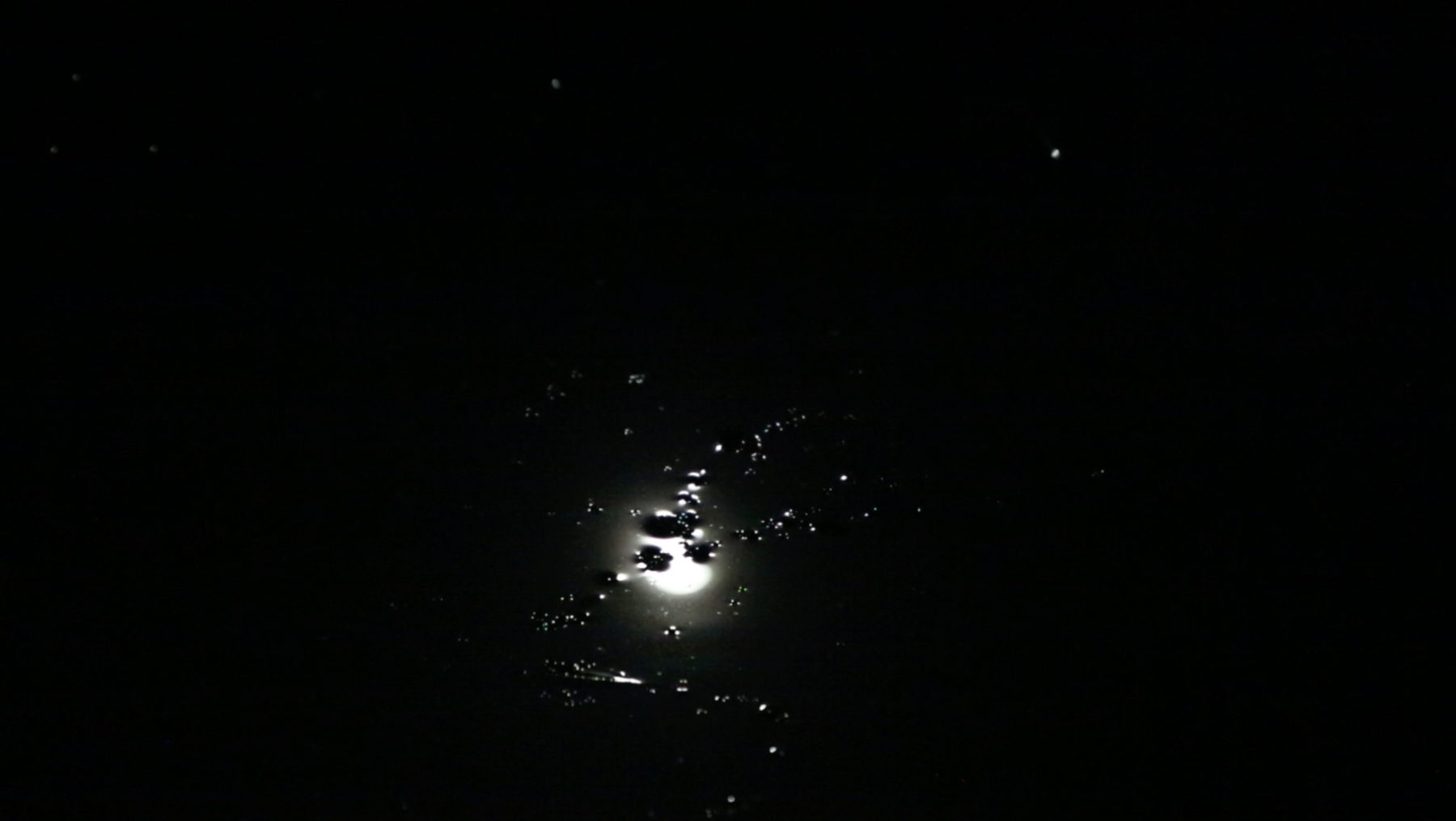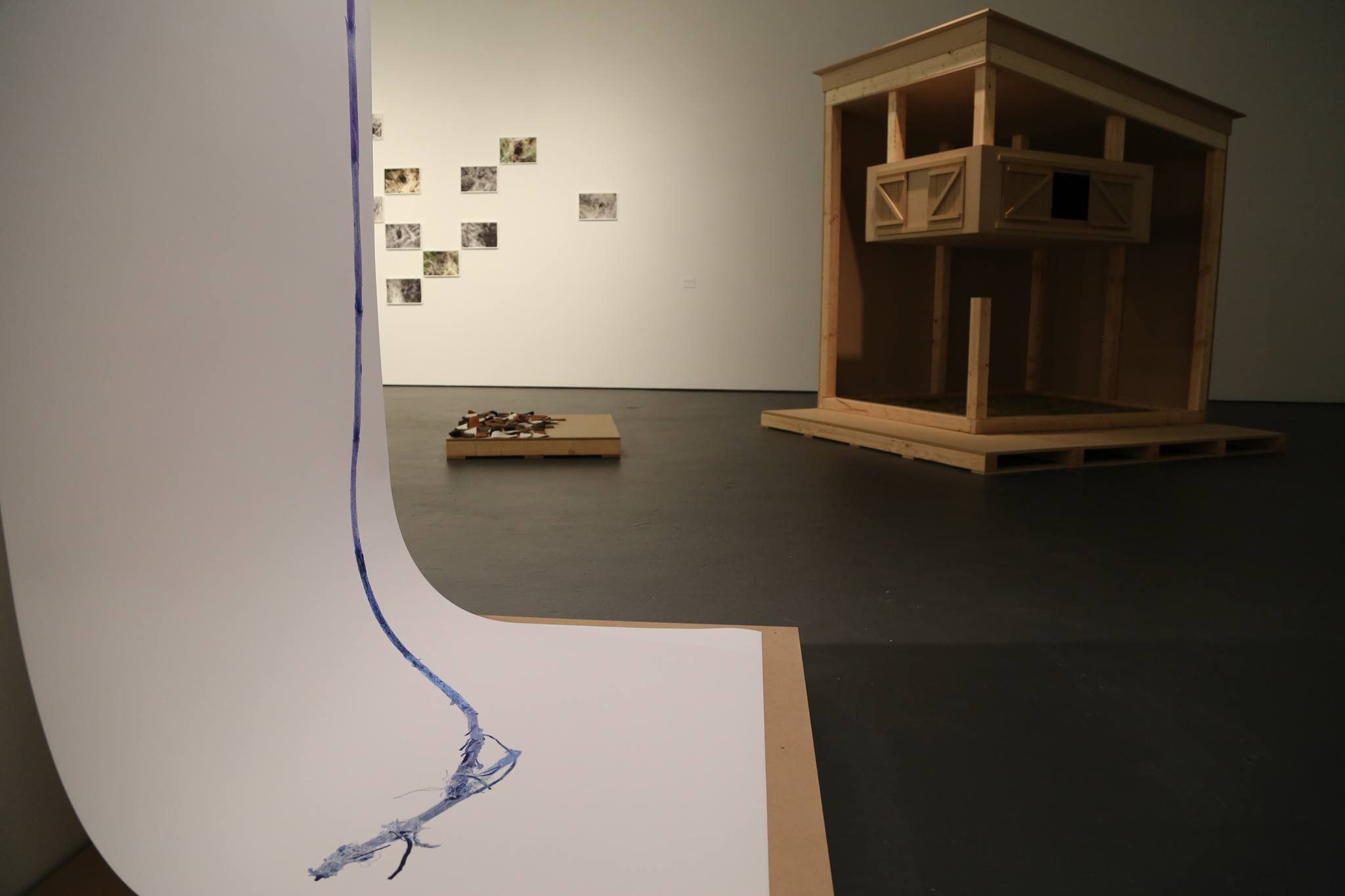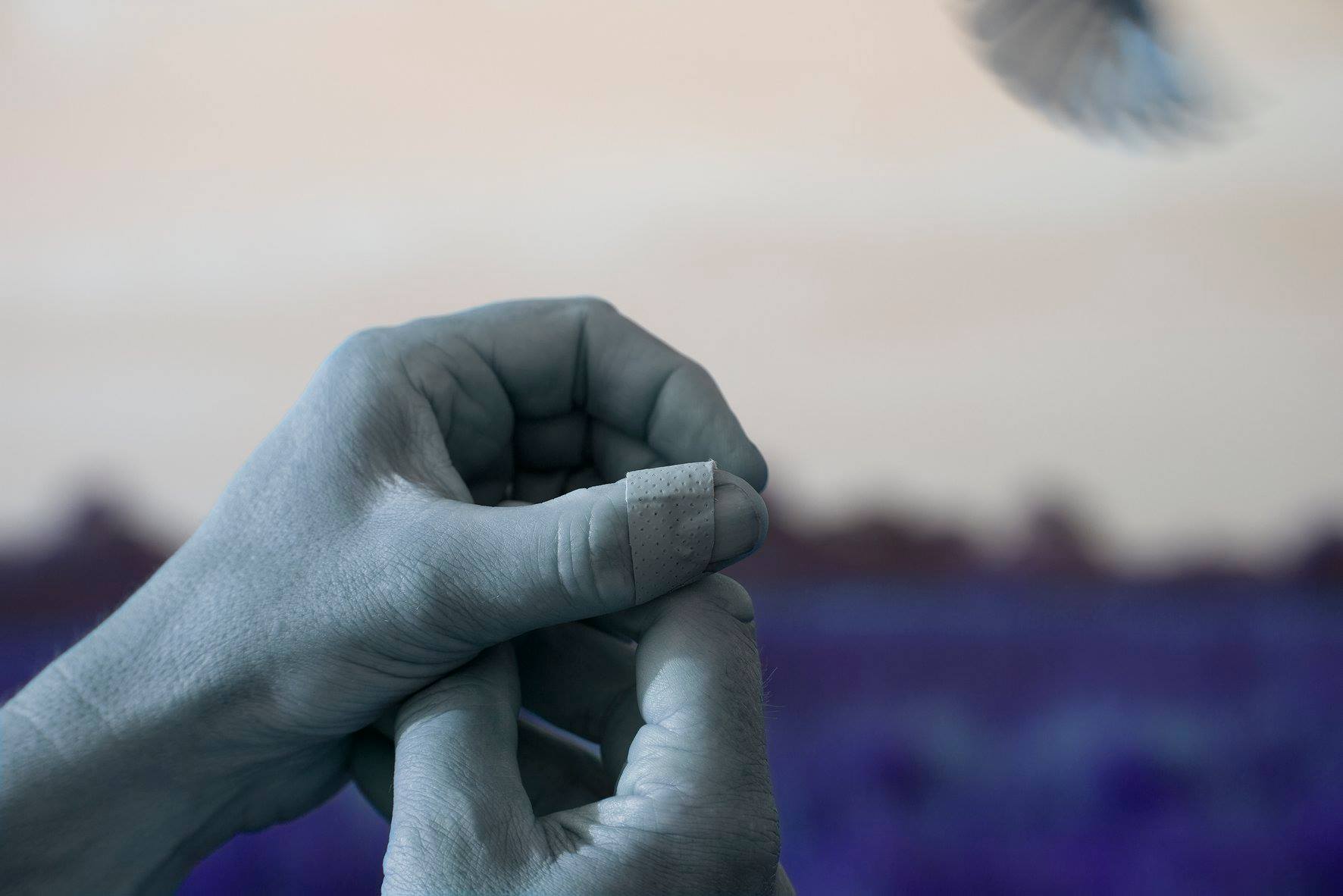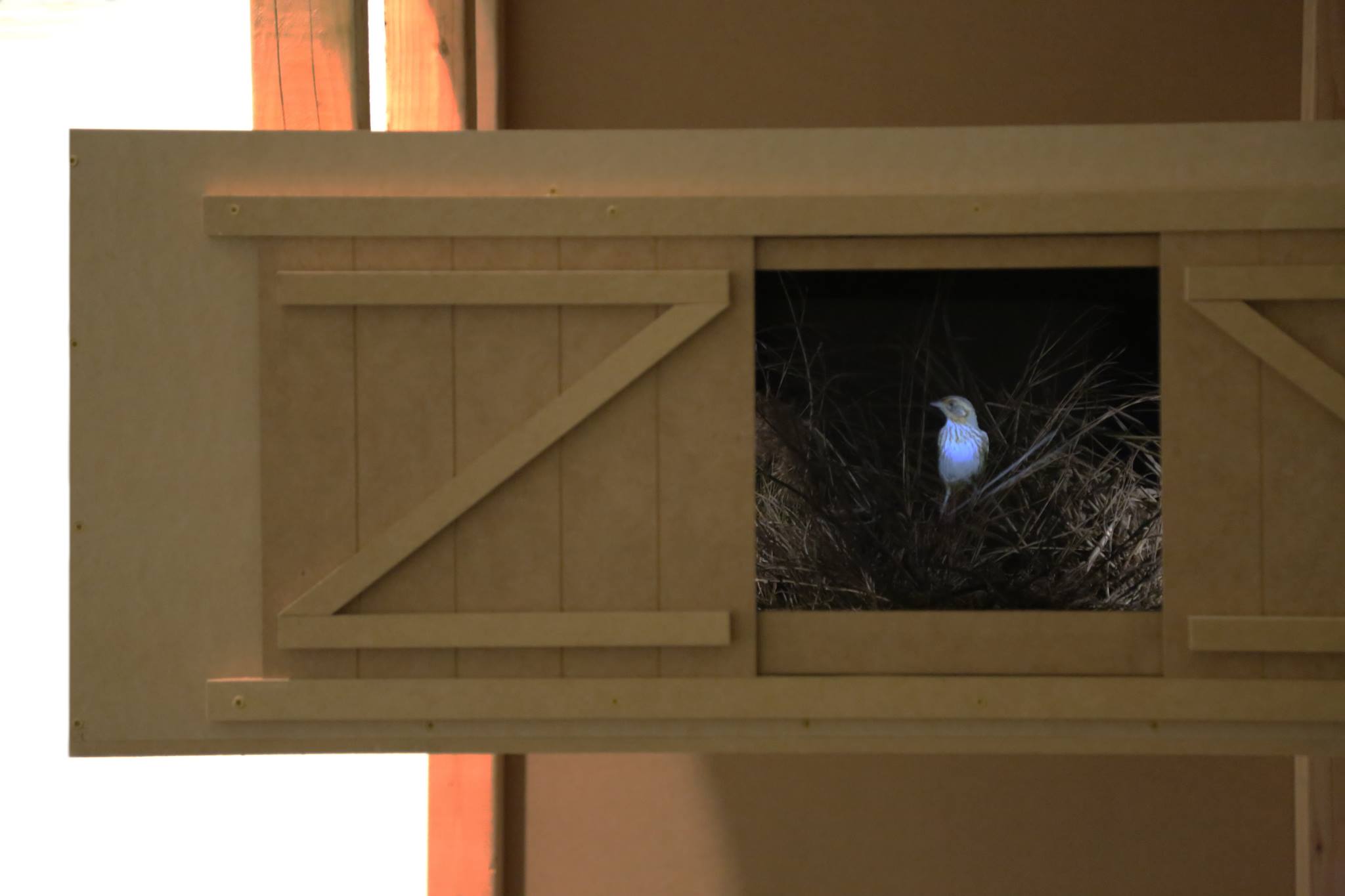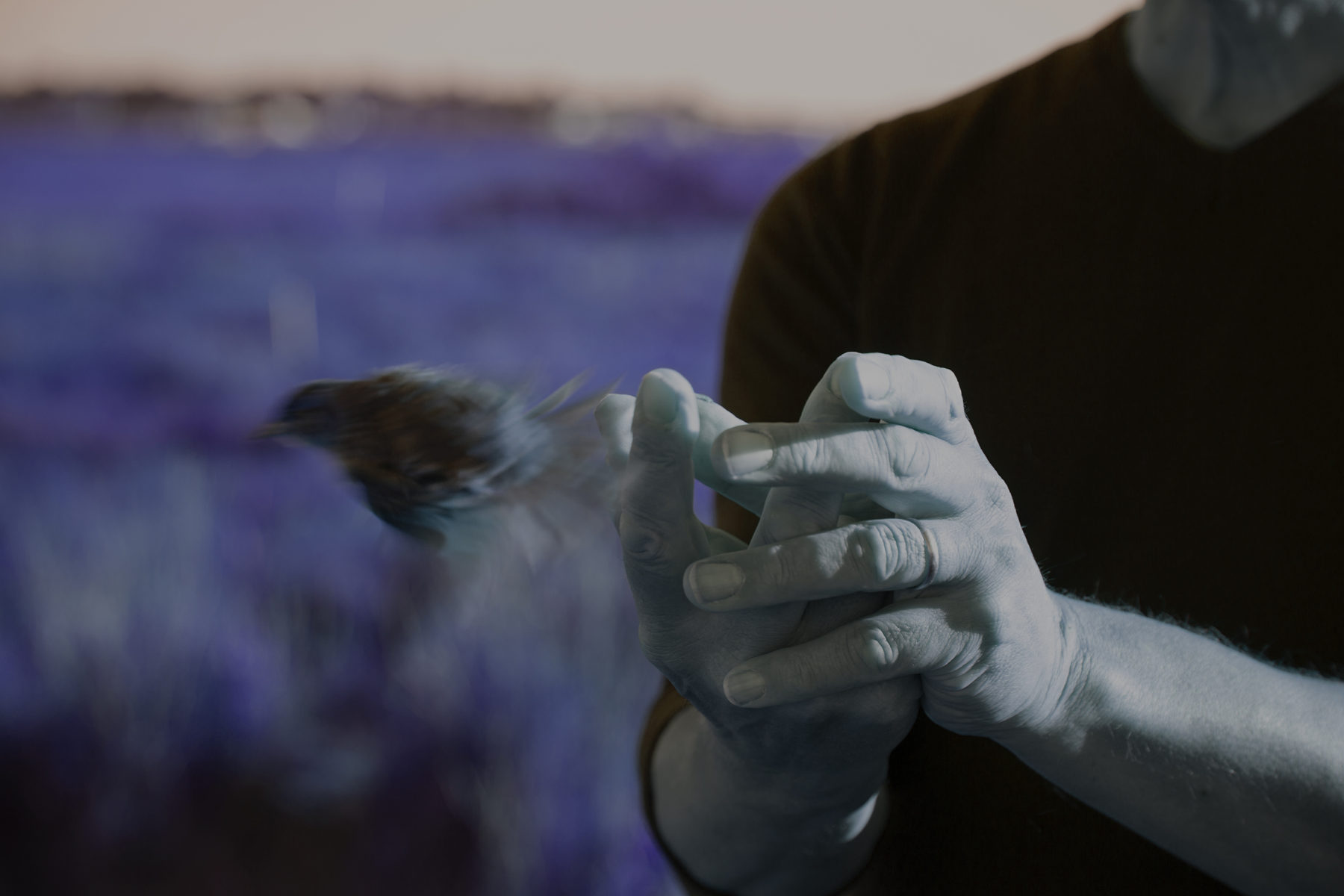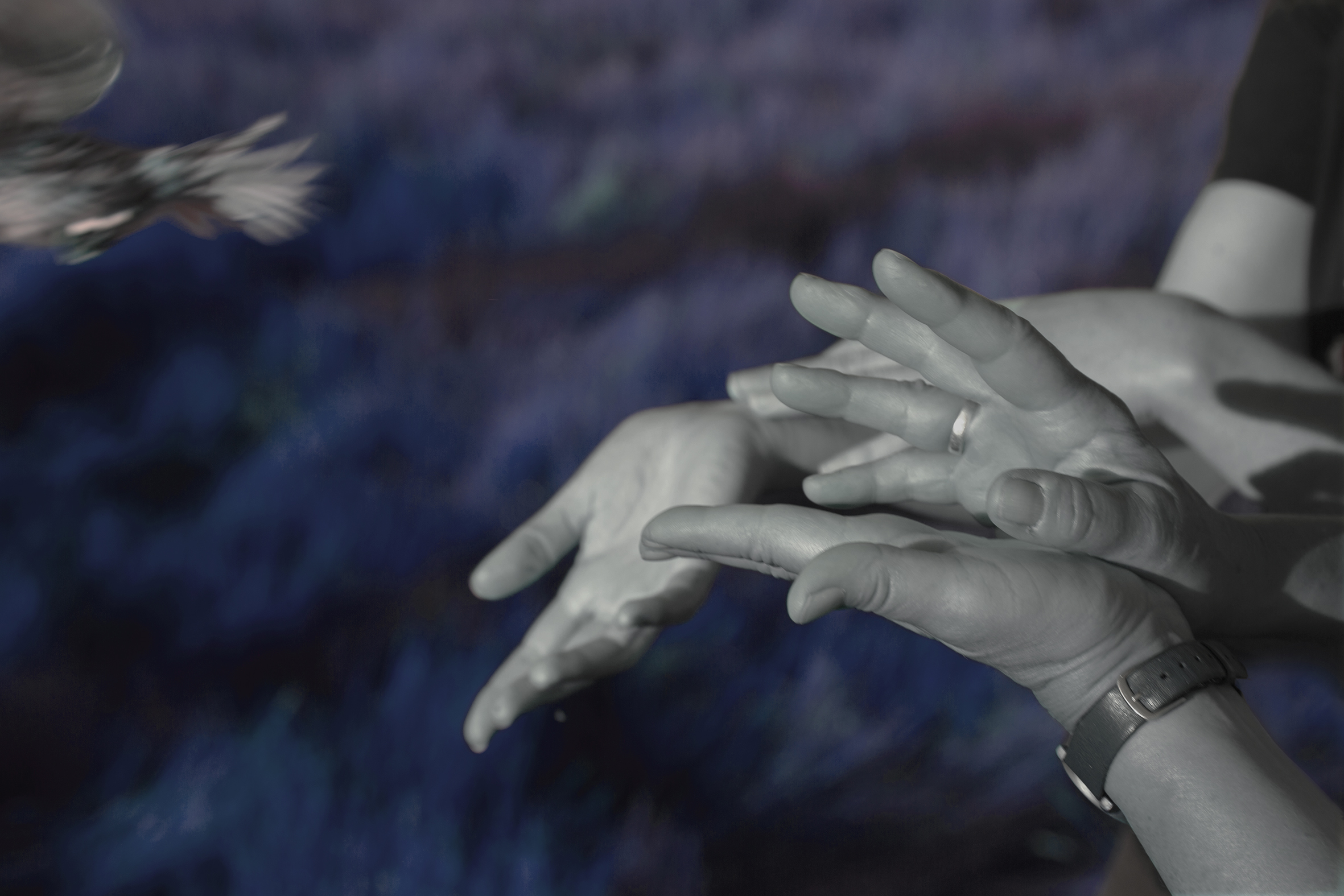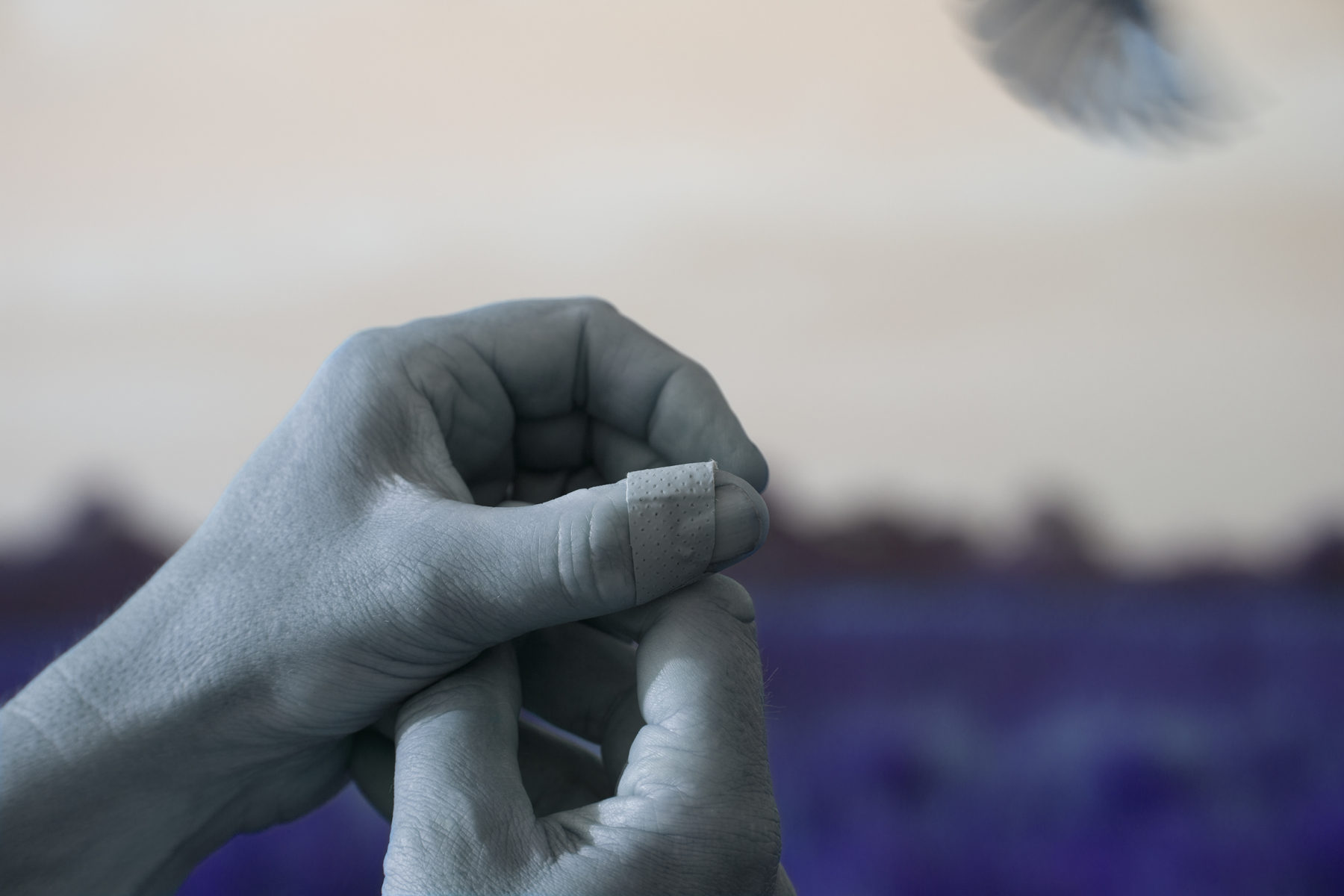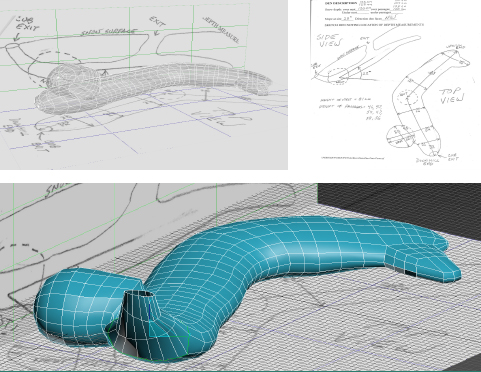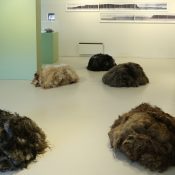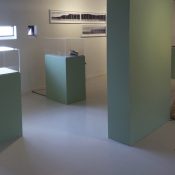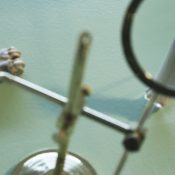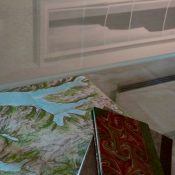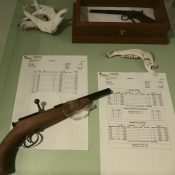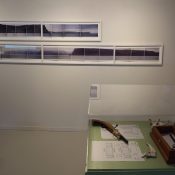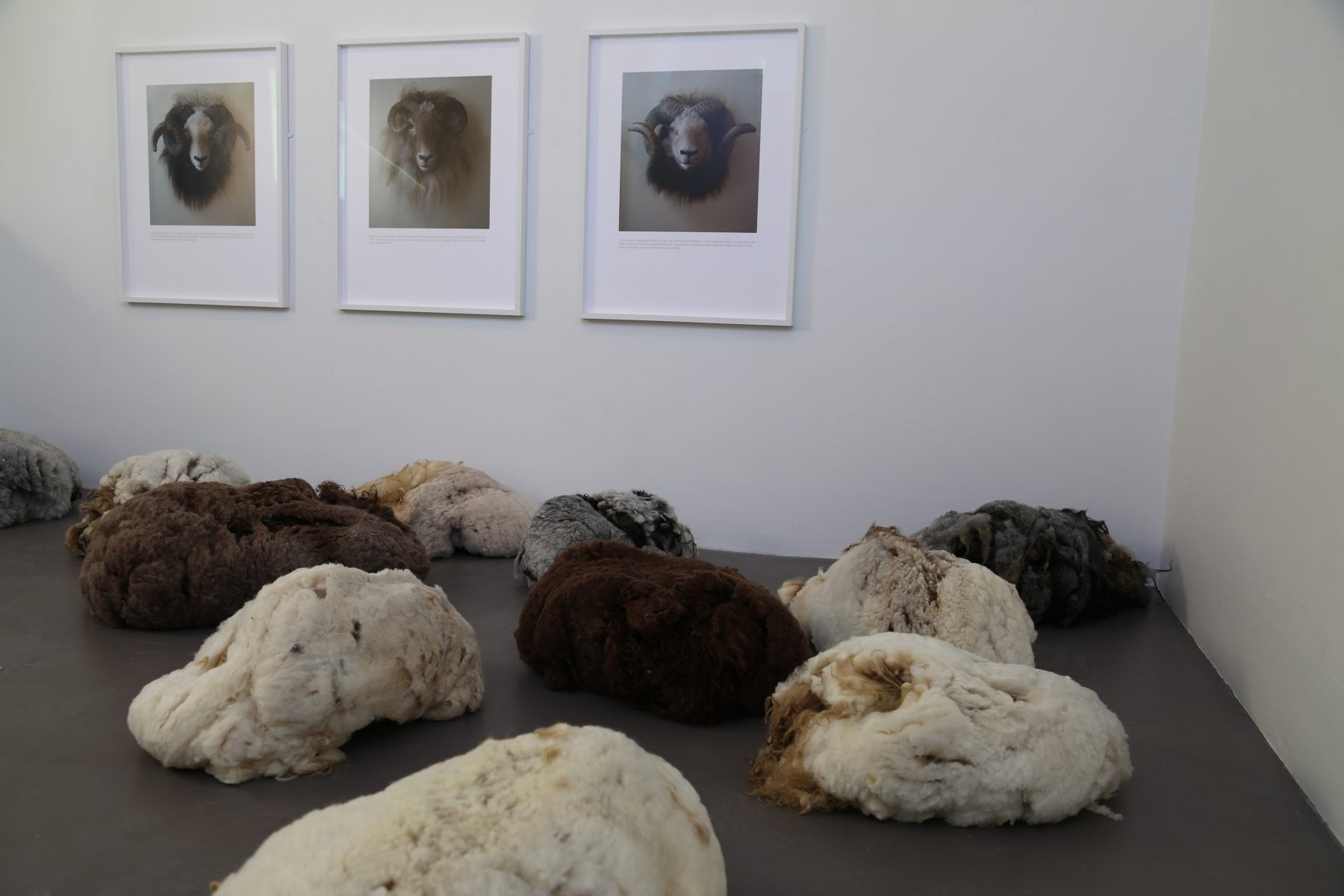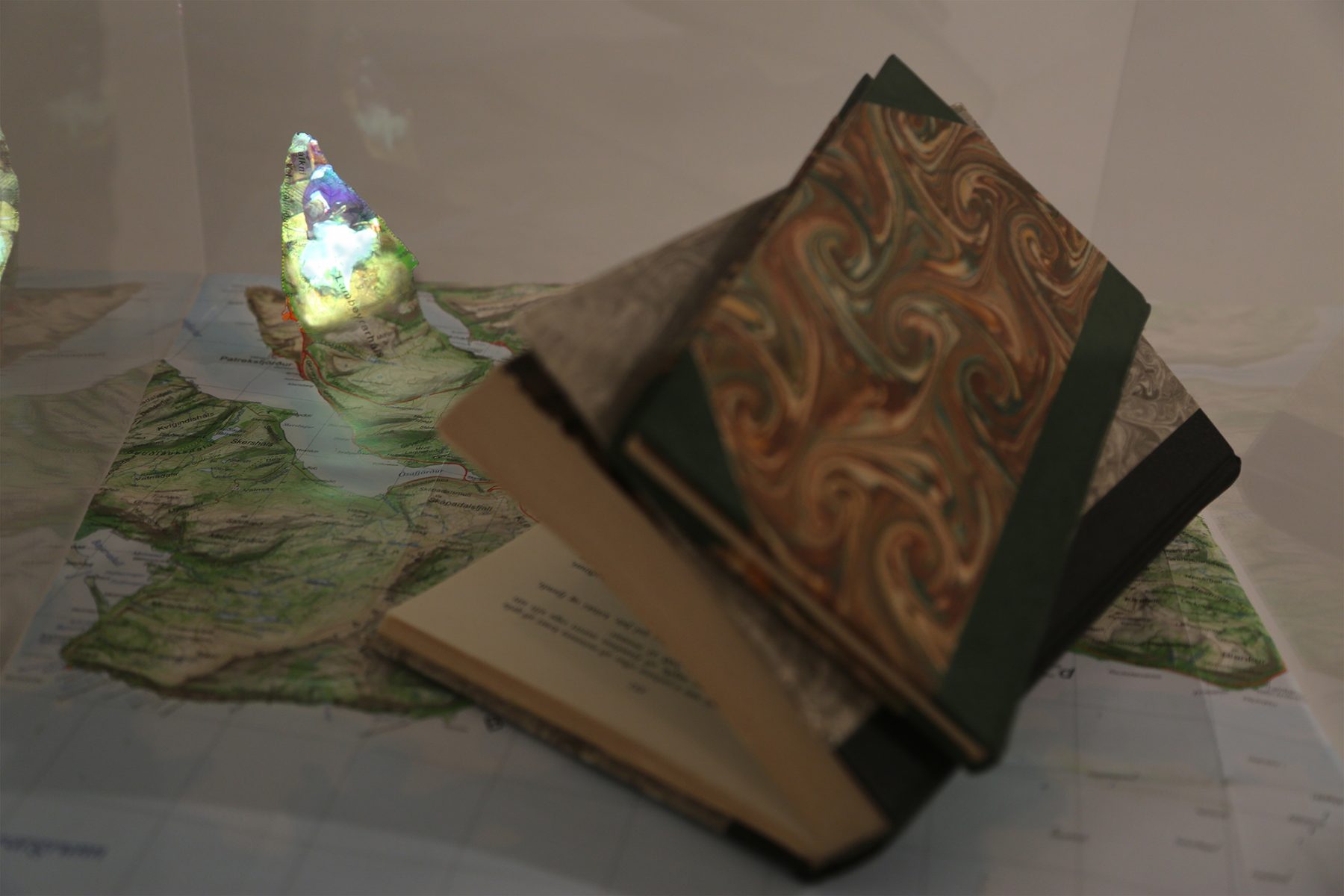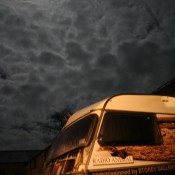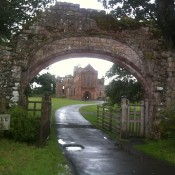All posts by Patricia
The Only Show in Town
Elevation #6: the ebbing
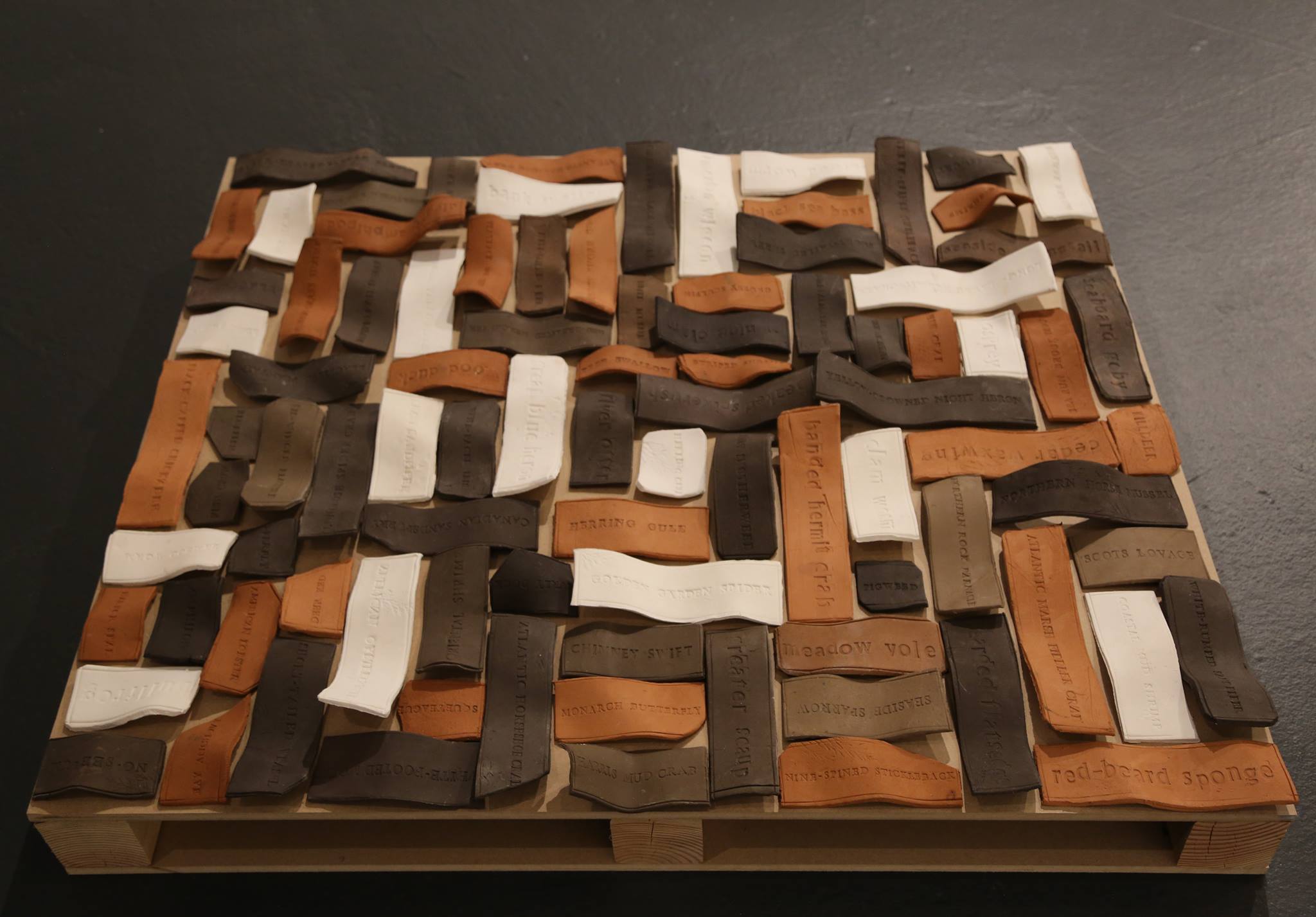
Elevation #4: flood/wave/flood (detail) ceramic tiles on pallets
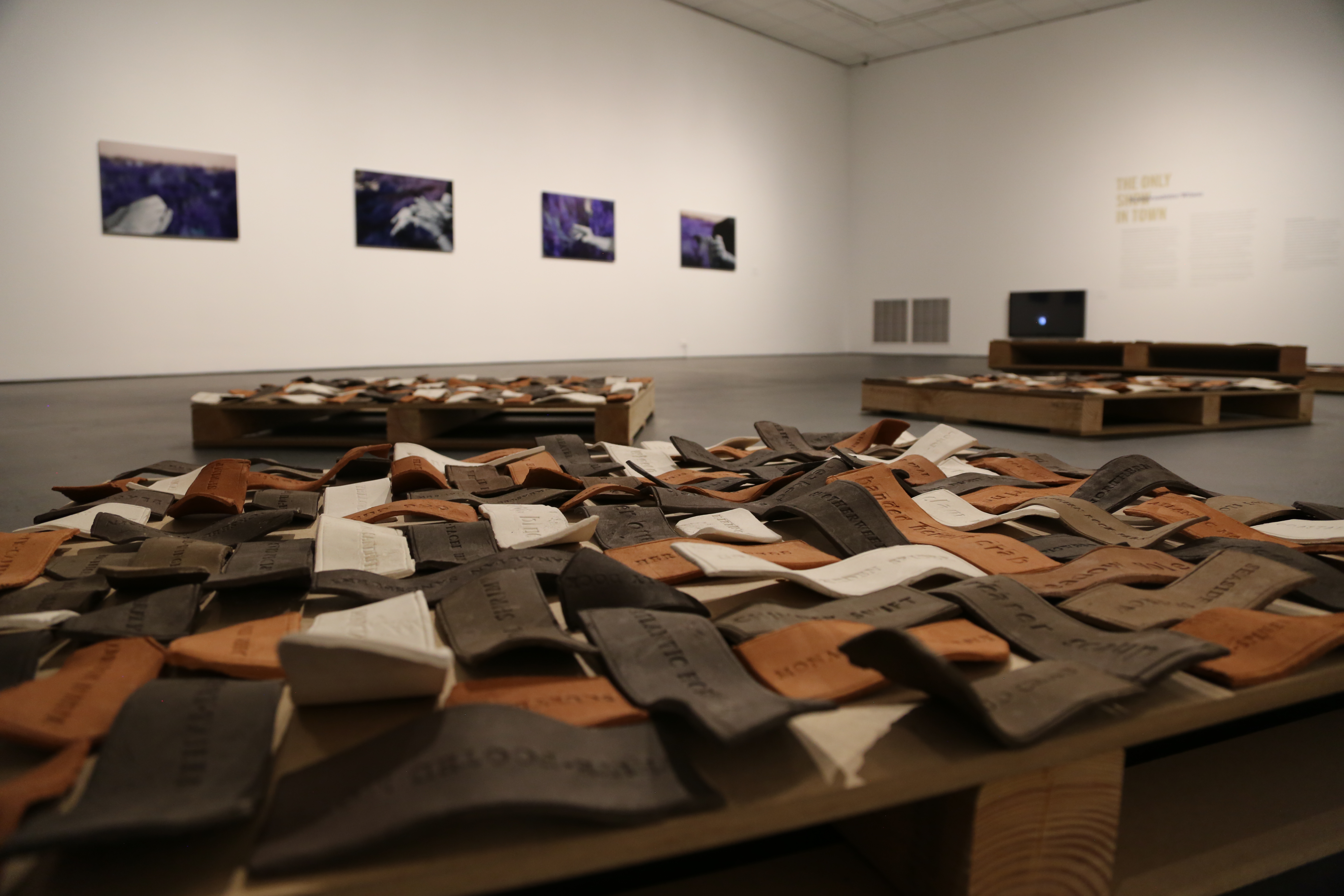
Elevation #4: flood/wave/flood (detail) ceramic tiles on pallets
The Only Show in Town
an introduction by Jo-Ann Conklin, Director of the Bell Gallery
It’s 4:30 am on a late-June morning when I arrive to pick up BryndísSnæbjörnsdóttir and Mark Wilson from their bed and breakfast in Providence. We are on our way south, to Jacob’s Point, a marsh in Warren, RI, where Deirdre Robinson and Steve Reinert are researching saltmarsh sparrows. As we arrive, it is already warm – the sun is rising on the marsh, glistening in dew on the grasses; it is peaceful and beautiful, and awe inspiring. The crew is already set up, going about their business of looking for saltmarsh sparrow nests: small indentations in knee-high grasses that are invisible to the untrained eye. Their task is to band the birds and to record their nesting habits, their successes and unfortunate and increasing failures in the face of incrementally rising sea levels.
Elevation #1: escape/release 3
Experiences such as this are commonplace for Snæbjörnsdóttir and Wilson, whose research-based art practice has led them to collaborate with specialists in far-flung natural settings around the globe.[1]Over their twenty-year collaboration, they have created artworks addressing California condors and humpback chub in Arizona’s Grand Canyon, polar bears living in Alaska and taxidermied in the UK, seals in Iceland, gulls in Sweden – and even our pets. In each of these series, they examine the “cultural lives” of animals — the relationship between non-human and human animals and how human culture intersects with, and often interrupts, the balance of nature. Their works intersect with issues in animal studies, as well as broader studies of colonialism, ecology and climate change.
Which brings us to the saltmarsh sparrow. What story do Snæbjörnsdóttir and Wilson have to tell us about the saltmarsh sparrow, and what story do the sparrows have to tell about us? Living exclusively in narrow and depleted marshlands along the eastern coast of the US, saltmarsh sparrows are threatened by landfilling for development on one side and sea-level rise on the other. Rhode Island’s saltmarshes are among the most vulnerable in the United States because of their low elevation and because the rate of sea-level rise in the Northeast is higher than in other places.[2]
Saltmarsh sparrows are among a number of species that breed in this delicate and endangered landscape. Nesting on the ground, saltmarsh sparrows—Ammospiza caudacuta—have evolved a highly particularized breeding habit that allows them to mate, lay, hatch, and fledge chicks within twenty-eight-day cycles – the time between high tides when the marshes flood. The female lays her first egg five days after mating, then lays one each day for two or three days (the chicks may be the offspring of several males, who have no responsibility for rearing chicks). Incubation takes about twelve days, and it takes seven to eight days for the chick to be strong enough to climb out of the nest (they cannot fly or swim). If not perfectly performed—if the female has mated late or built her nest too close to the water’s edge—when the water rises eggs float out of the nest and are lost, or chicks that are too young to climb up the marsh grasses die of exposure or are drowned. Sea-level rise from climate change has shifted this delicate balance. Saltmarsh sparrow populations have decreased by 75% since 1998, and at some point in the next fifty years the sparrows will cease to exist.[3]Although there are aspirations for floating saltmarshes and other extraordinary measures, the impending loss of the species is accepted fact among the orthnithological community. It was this assertion, made by ornithologist Charles Clarkson during an early interview for the artists’ project at Brown, that stunned Snæbjörnsdóttir and Wilson and catalyzed their exploration into the plight of the saltmarsh sparrow.
Avian researchers—like Robinson and Reinert, and Chris Elphick, principal investigator of SHARP, the Saltmarsh Habitation and Avian and Research Program—are racing the clock and the tides to learn as much as possible about saltmarsh sparrows prior to their extinction, and to build support in hope of saving other saltmarsh species. In spring of 2017, biologists Robinson and Reinert initiated their citizen science project, the Saltmarsh Sparrow Research Initiative (SALSri). The impetus was a serendipitous sighting of a banded saltmarsh sparrow at Jacob’s Point, made by Robinson the previous summer. Finding a banded bird is unusual. Curious to know more, Robinson elicited the help of Reinert, a Master Bander. They captured and identified the bird. Referencing the band codes, they learned that she had been banded in Florida on October 31st, 2015. This tiny bird, weighing only 0.7 oz., had migrated 1,243 miles from Florida to Rhode Island — setting the record for the longest documented migration for her species.
Elevation #1: escape/release 4
Snæbjörnsdóttir and Wilson’s research-based artworks are multidisciplinary in nature, most often taking the form of installations, involving diverse media including sculpture, found objects and materials, video, audio, drawing, photography and texts. In The Only Show in Town,as in their other projects, they “represent the process of research itself.”[4]Through a series of six works in the exhibition, the artists invite us to join them in the saltmarsh, to share their experience, which Mark describes as “the significant search for some understanding not yet known.”[5]
As they entered the saltmarsh on that June morning, the artist team was instructed in the first rule of the marsh: the need to walk slowly and deliberately in order to study the ground beneath their feet, “to distinguish between promising-looking twists of dried grass and the constructions that would hold or had once held the eggs and hatchlings of saltmarsh sparrows.”[6]Robinson pointed out nests and gave instructions on how to find them — Mark was a natural, identifying a nest almost immediately. In the exhibition, this search is translated into an arrangement (a field or marsh) of photographs. Viewing the photos, which are shot down on tangles of grasses, we join in the search for nests, looking beyond the surface texture to find the tell-tale indentation of the nests.
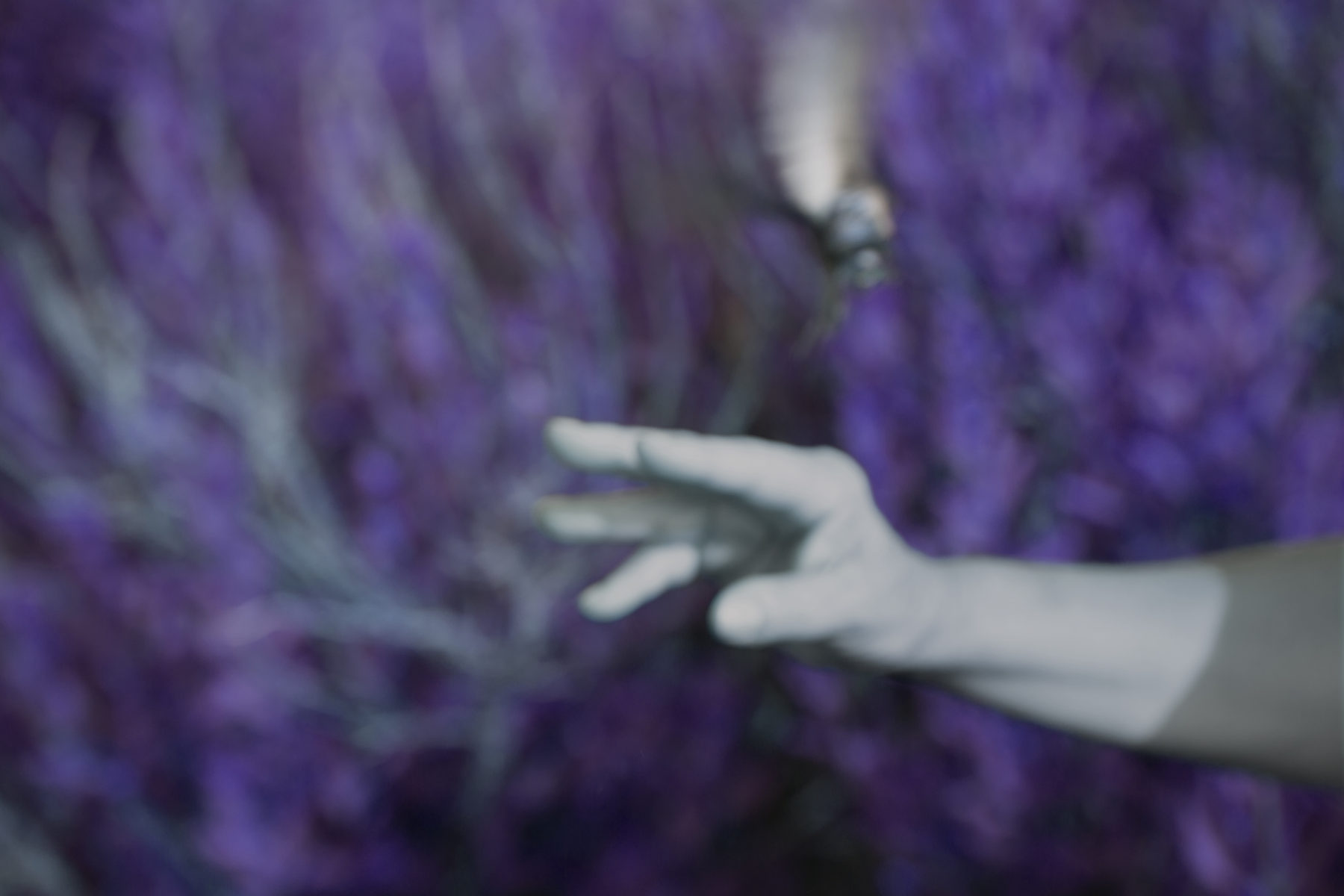 Elevation #1: escape/release 2
Elevation #1: escape/release 2
While Mark sought out nests, Reinert instructed Bryndís in the identification and properties of cordgrass, salt hay grass, and glasswort—plants common to the marsh. The work entitled Salicornia depressais their 172” high photograph of one such plant, commonly known as glasswort or pickleweed. A fleshy, salt-tolerant plant, glasswort is usually the first plant to grow in high-salt environments, making it invaluable in the establishment of new marshes. Additionally, it provides a habitat for invertebrates, is a food source for many animals, and is edible to humans.
Working with student technicians and a photomacrographic system at the RISD Nature Lab, Snæbjörnsdóttir and Wilson scanned a sample of the grass in sections, each section stack-scanned 65 times, and later reassembled these, in Photoshop, to produce this highly detailed image. The extreme magnification of the image invites us to look closely, to examine the plant in a way not possible with the human eye, and to enable a scale-shift more correspondent with the view of a creature the size of a sparrow.
Salicornia depressareflects the artists’ concerns with plant blindness. Identified by biologists James H. Wandersee and Elizabeth Schussler in the late 1990s, plant blindness refers to the human tendency to ignore plant species and to disregard their importance.
We defined plant blindness as: the inability to see or notice the plants in one’s own environment—leading to: (a) the inability to recognize the importance of plants in the biosphere, and in human affairs; (b) the inability to appreciate the aesthetic and unique biological features of the lifeforms belonging to the Plant Kingdom; and(c) the misguided, anthropocentric ranking of plants as inferiorimals, leading to the erroneous conclusion that they are unworthy of human consideration.[7]
Snæbjörnsdóttir and Wilson contend that, “In view of increasing species extinction, the world can no longer afford our citizens to see ´nothing´ when they look at plants, the basis of most life on earth.”[8]In a symbolic act of respect the artists returned the specimen of glasswort to Jacob’s Point and replanted it.
Elevation #1: escape/release 1
In a work, snaking its way across the Gallery floor, the interdependency and complexity of the saltmarsh habitat is indicated in several hundred ceramic tiles impressed with the names of animals, birds, insects, and plants that live in or frequent the marsh and contribute to its ecosystem. Some of these species, like the saltmarsh sparrow, seaside sparrow, and clapper rail are “obligates” that spend their entire life cycle in the marsh. Others breed in the marshes and elsewhere, and may survive the loss of saltmarshes. Still others come to feed in the rich environment of the marsh. The artists make visible the richness of species that thrive in the saltmarsh, out of view of urban dwellers. They quantify the variety of plants, insects, birds, and animals that will be lost or displaced when rising waters overtake and flood the marsh.
***
At Jacob’s Creek, the artists watched as Robinson and Reinert carefully captured the birds in mist nets and quickly took measurements of their health, banded their legs for future tracking, before releasing them. There is something magical about the moment of release, when the bird is freed and lifts off from the hand of the researcher. It stems from the encounter of two species in unusually close proximity, and from the release of anxiety in both bird and human as the encounter ends. Snæbjörnsdóttir and Wilsonhave captured this moment in a series of photographs that they describe as an “homage to the carers of the birds.”[9]While the photographs are that—a recognition of the humans who truly see and care for other species—they also carry darker implications. For here, the artists present us with an unrecognizable landscape. Colors have shifted to eerie, otherworldly hues: grasses are a mixture of navy and magenta, the sky an odd grey-pink. Making this shift, the artists definitively remove their images from the realm of documentary or environmental photography. Images that would otherwise read as sweet and wistful, take on an ominous and dystopic air. This manipulation in color forecasts our future world, in which the birds that disappear off the edge or out of the frame of the photos are no longer simply escaping our grasp; they are instead exiting our world.
Viewers to the exhibition will have noted the lack of representative images of our ostensible subject: the saltmarsh sparrow. Reinforcing the theme of “searching” and referencing the extinction of the bird, the artists offer only one such view and position it as the culmination of our viewing experience. A bird blind, traditionally used for viewing and study, sits at the rear of the gallery; through the window in the blind we observe athree-dimensional likeness of a saltmarsh sparrow. Perched on a branch, the life-size bird ruffles her feathers as she observes her surroundings (the marsh or us). The artists draw attention to the reversal of roles, of the bird observing us or alternately of our attempting to look out through the eyes of the bird. The illusion is created via the theatrical technique called “Pepper’s ghost,” which employs a mirror to “throw” an image into view. The image is fleeting. Reduced to a ten secondoop that the artists liken to a “relic” – a future object of remembrance.[10]
***
The extinction of the saltmarsh sparrow is foretold. We have experienced this before with Martha the passenger pigeon who died in the Cincinnati Zoo on September 1, 1914, with Lonesome George the last known Pinta Island tortoise of the Galapagos Islands who passed on June 24, 2012, and with multitudes of less famous examples of species collapse. In this period of extraordinary and human-generated changes to our environment, how should we respond to the loss of this small, somewhat hidden, and un-iconic bird, whose existence may seem insignificant to those humans who are neither biologist, environmentalist, nor even, avid birder? For Snæbjörnsdóttir and Wilson, the answer is clear:
“When the extinction of a species occurs, it is neither enough nor appropriate to close ranks and ‘carry on regardless.’ We should learn to grieve and through that process come to an understanding of how it is we are changed — and how it is we should go on.[11]
“As artists, we consider art to be both the most promising platform and the most likely instrument by which . . . traditionally discrete knowledge-fields will [combine to] succeed in effecting significant and increasingly urgent cultural and behavioral change.
And change is the only show in town.”[12]
Jo-Ann Conklin
Published on the occasion of the exhibition of the same name
April 6 to July 7, 2019
©David Winton Bell Gallery, Brown University
Titles: The Only Show in Town
Elevation #1:escape/release/escape 1–5
Elevation #2:moon/wake/moon/wake/moon/wake
Elevation #3:Salicornia depressa
Elevation #4: flood/wave/flood
Elevation #5: hide/blind/hide
Elevation #6: the ebbing
[1]Research for The Only Show in Townwas conducted over a two-year period (2017–2019).
[2]“According to SLAMM [Sea-level Affecting Marshes Model] project maps, Rhode Island is poised to lose 13 percent of its marshes with one foot of sea-level rise; 52 percent of marshes with three feet of sea-level rise; and a staggering 87 percent of its marshes with five feet of sea-level rise.” http://www.crmc.state.ri.us/news/2017_1016_wc_rssm.html.Estimated projection from NOAA [National Oceanic and Atmospheric Administration] forecast sea-level rise of nine to eleven feet by 2100, foretelling the demise of RI saltmarshes.
[3]The results of Reinert and Robinson’s study are not encouraging. Of the twenty-seven nests that were monitored in 2018, only nine nests were successful in fledging at least one chick. More than half of the nests were lost to flooding. 2017-2018 Summary: Breeding Ecology of Saltmarsh Sparrows (Ammodramus caudacutus) in Narragansett Bay, Rhode Island.https://drive.google.com/file/d/1hvEXL2TqKIsV6gUnY_jNmvviV0ITA2Ox/viewaccessed 2/15/19.
[4]Email correspondence with artists, 9/27/18.
[7]James H. Wandersee and Elisabeth E. Schussler, “Toward a Theory of Plant Blindness,” in Plant Science Bulletin, Spring 2001. https://www.botany.org/bsa/psb/2001/psb47-1.pdfaccessed 2/15/19.
[8]Artists’ website, Beyond Plant Blindness.https://Snæbjörnsdóttirwilson.com/category/projects/beyond-plant-blindness/accessed 2/1/19.this quotation from the team behind the Swedish-based project Beyond Plant Blindness(2015-17) of which Snæbjörnsdóttir Wilson were the artist contributors.
[9]Conversation with the artists, 1/25/19.
[10]Email from the artists, 2/24/19.
[11]BryndísSnæbjörnsdóttir and Mark Wilson, “Other Stories ..On Power and Letting Go,” in You Must Carry Me Now: The Cultural Lives of Endangered Species, Snæbjörnsdóttir/Wilson, 284 Publishing Inc., Arizona State University Art Museum, 241.
Beyond Plant Blindness
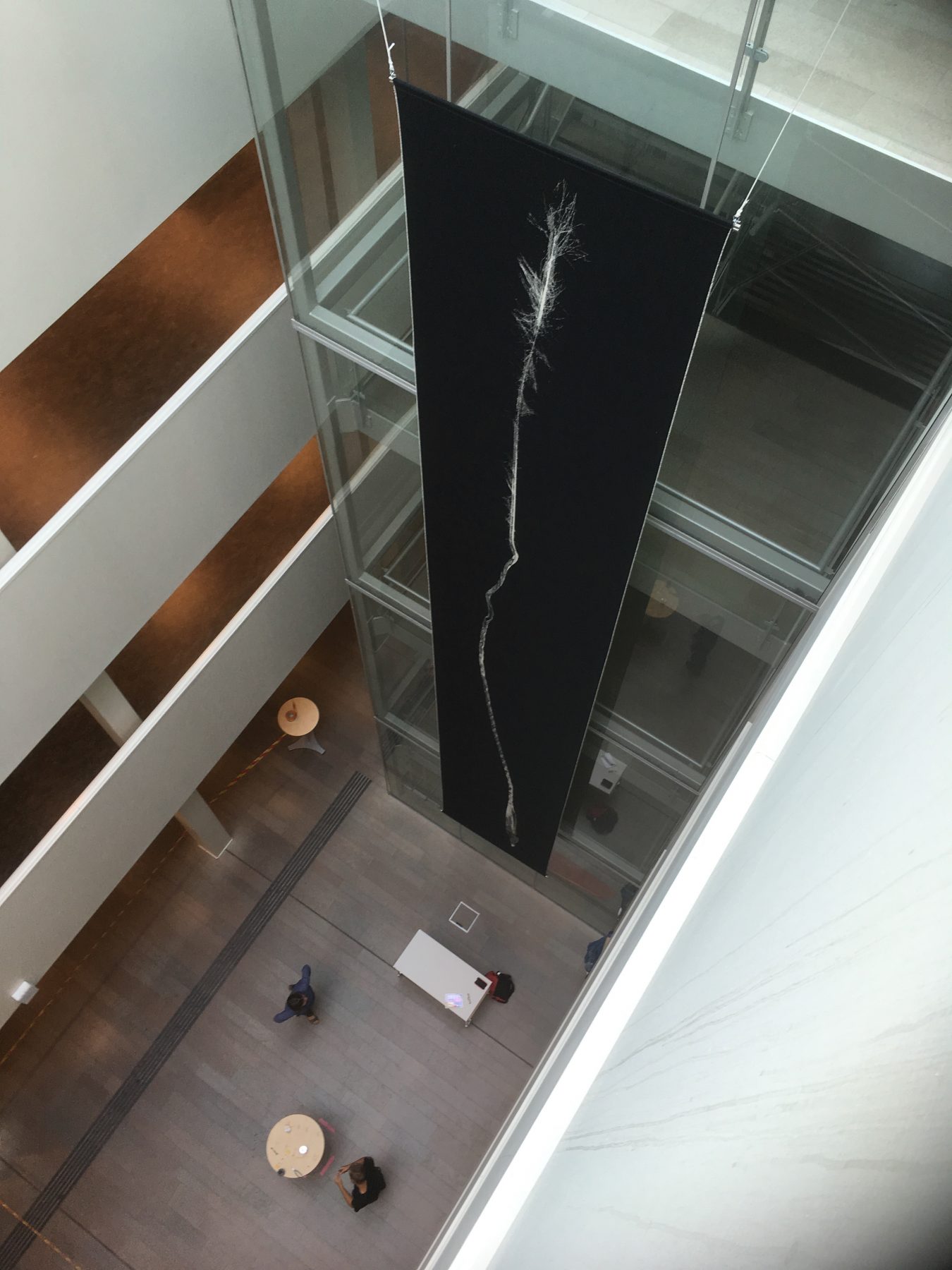
Snæbjörnsdóttir Wilson have recently installed a new work, a 14 metre tapestry, Searching for Stipa. The tapestry shows the complex structures of a grass seed Stipa pennata. During research for the project Beyond Plant Blindness, under the supervision of the artists Bryndís and Mark, a scanning electron microscope at Chalmers University of Technology was used to image the seed awn in twenty-nine highly detailed sections. The artists then meticulously assembled the scans as one image, using Photoshop software. From this single file, the tapestry was woven in wool, in Norway, by Kristina Aas.
It was installed in Hus B, Pedagogen, University of Gothenburg on August 15 2018

Searching for Stipa #2 (Rain Shelter) Panels 1, 2 & 3
Contemporary humans have become an urban species. Living in megalopolitan cities reduces intimate contact with the natural world thus placing greater emphasis on ´presented nature´ settings, such as zoos, botanic gardens and natural history museums
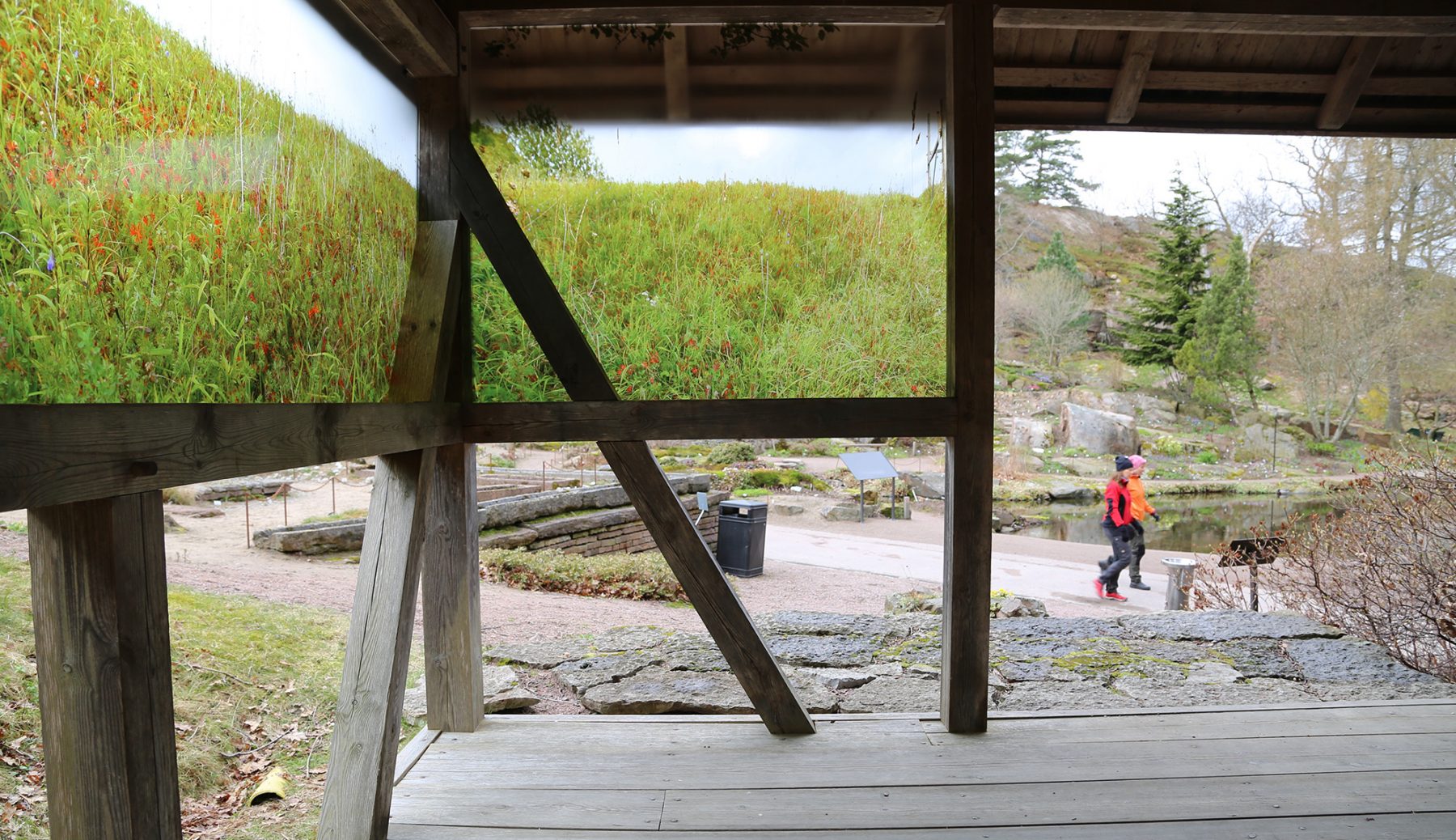
Searching for Stipa #2 (Rain Shelter) Panels 1 & 2
However, previous research has demonstrated that ´plant blindness´ inhibits human perceptions of plants. In view of increasing species extinction the world can no longer afford our citizens to see ´nothing´ when they look at plants, the basis of most life on earth. The team of researchers in this project Snæbjörnsdóttir/Wilson, Dawn Sanders, Eva Nyberg, and Bente Eriksen Molau believe that conducting research in order to understand how we can move beyond plant blindness is imperative for a sustainable world
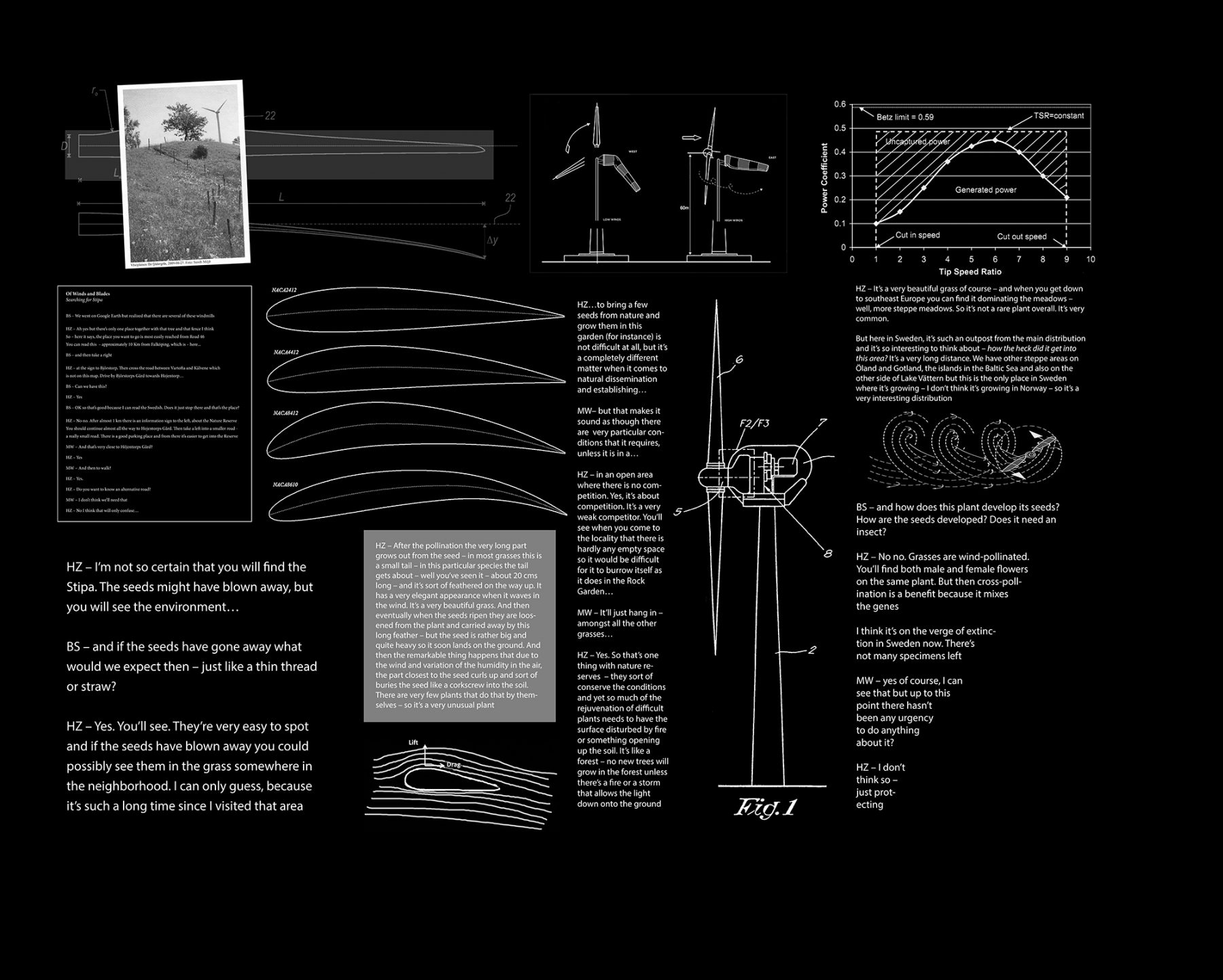
Searching for Stipa #2 (Rain Shelter) Panel 3
“The everyday life of a plant can appear to be static and silent to human perception. And yet, modern science tells us that plants live in complex, and often social, worlds. Removing plants from the human view makes it easier for us to exploit them but reduces our ability to see into their worlds; how might taking a different view improve our understanding and sensitivity to the lives of plants?” [1]
The artists Bryndís Snæbjörnsdóttir and Mark Wilson have examined instances of particular seeds and plants brought to Gothenburg Botanical Garden from diverse regions of the world
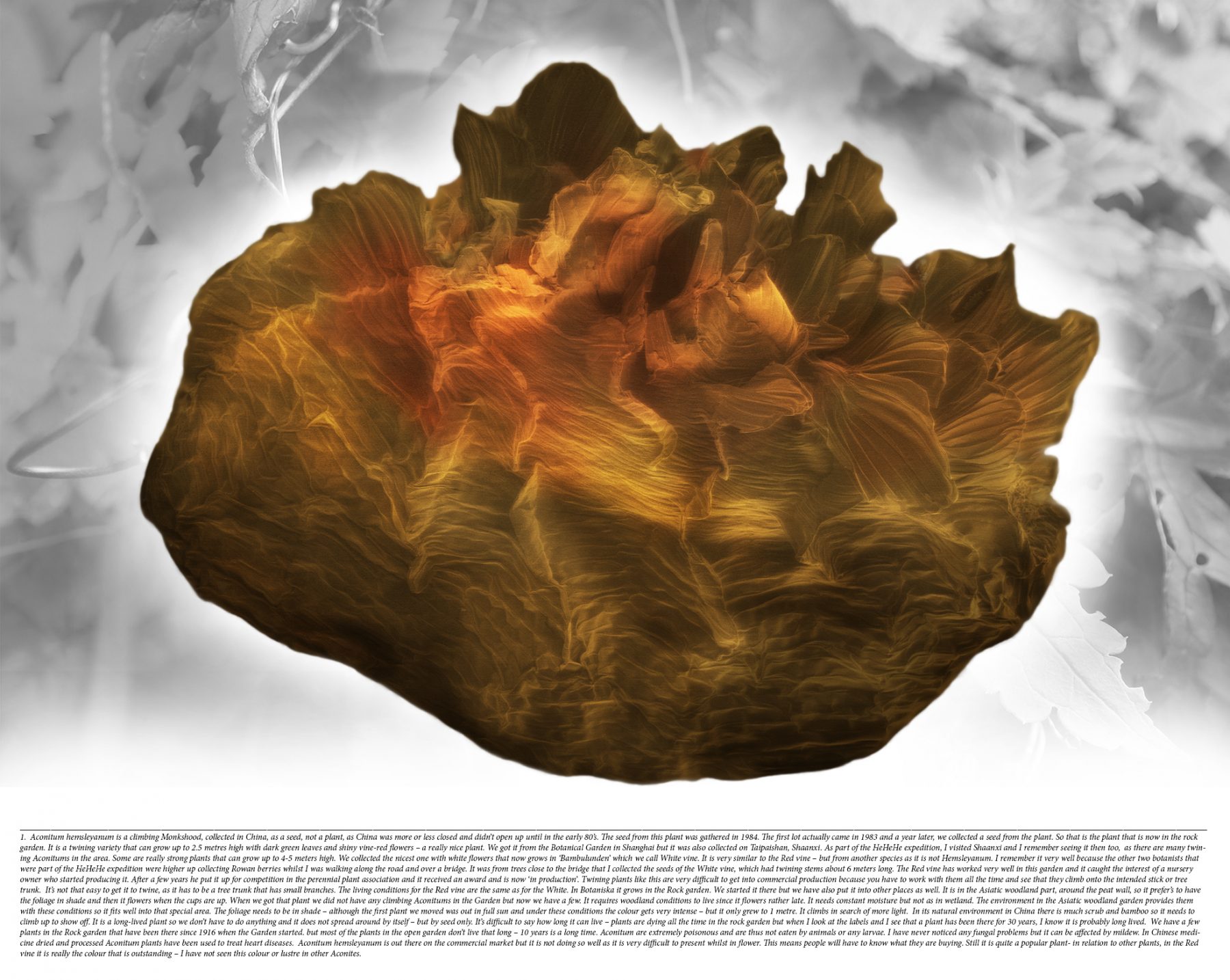
Aconitum hemsleyanum (Red Vine)
The fourteen photographs in the Gallery (plus that of Stipa at the Stolpboden site) are electron microscopic scans, made of seeds selected by Henrik Zetterlund, who also records his experience of their collection. How do such stories, of the environments and conditions from which these plants were taken, their perceived needs, new habitats and subsequent behaviour, unravel the simplistic dynamic of public display-for-recreation?
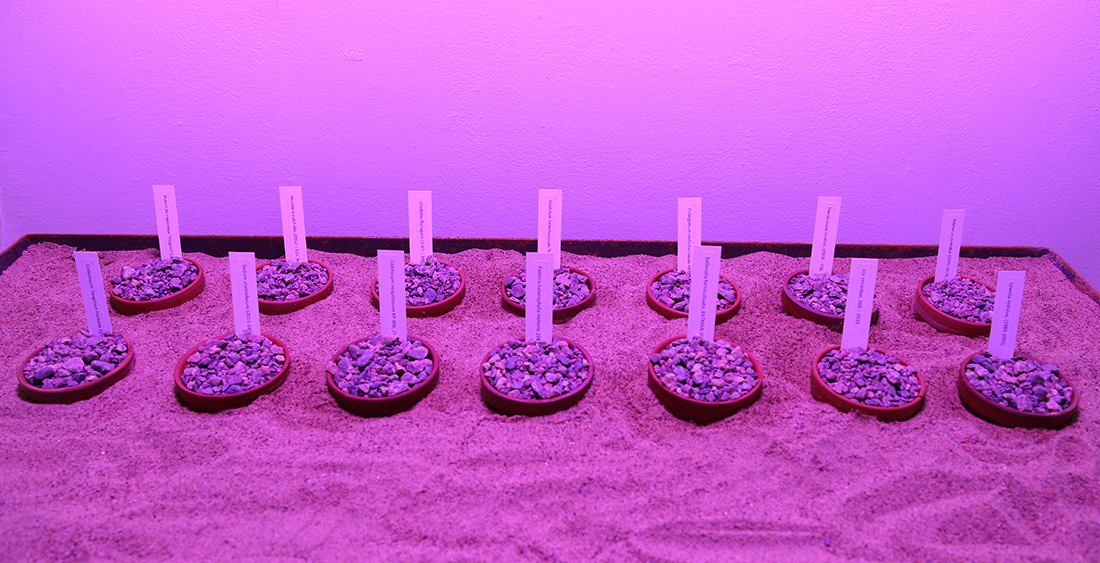
The seedlings growing under the growlight are from the very same seed batch as those in the photographs. Some are the very same seeds. Due to timing and the vulnerablility of the seeds not all of them might be in the gallery at the same time. Although we hope that further on into the summer all of them might be here, we cannot be sure. The well being of the seedlings/plants is our main concern and will determine whether or not they need different environmental conditions from those we can provide in the Gallery
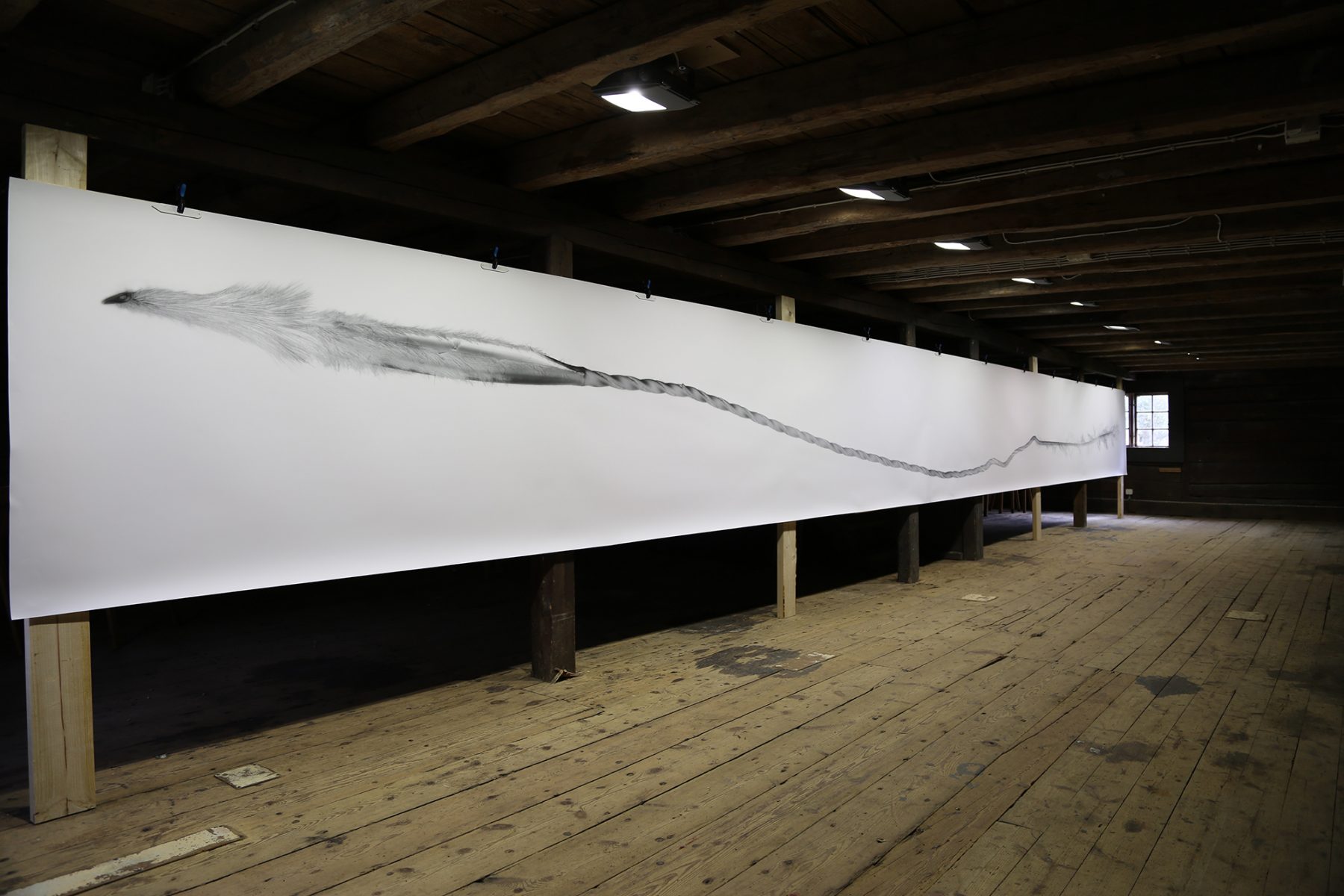
Searching for Stipa #1 (Stolpboden)
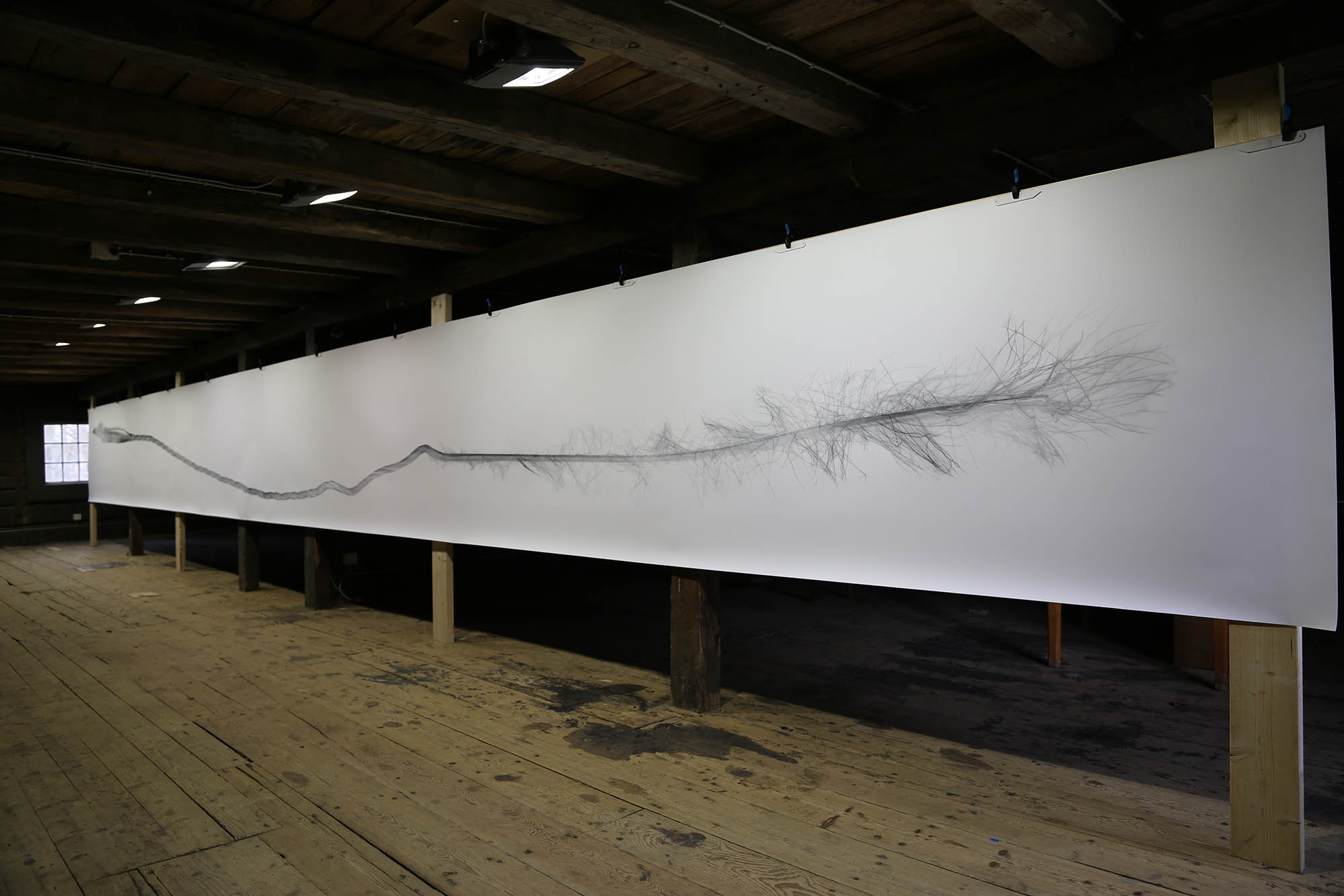
Searching for Stipa #1 (Stolpboden)
These artworks are part of the cross-disciplinary research project Beyond Plant Blindness: seeing the importance of plants for a sustainable world. The project was funded by The Swedish Research Council

Searching for Stipa – detail, approximately 1 m (image 1200 cms x 112 cms)
The artists would like to thank the many staff at Botaniska who have helped to support their project. Special thanks to Marika Irvine and Henrik Zetterlund
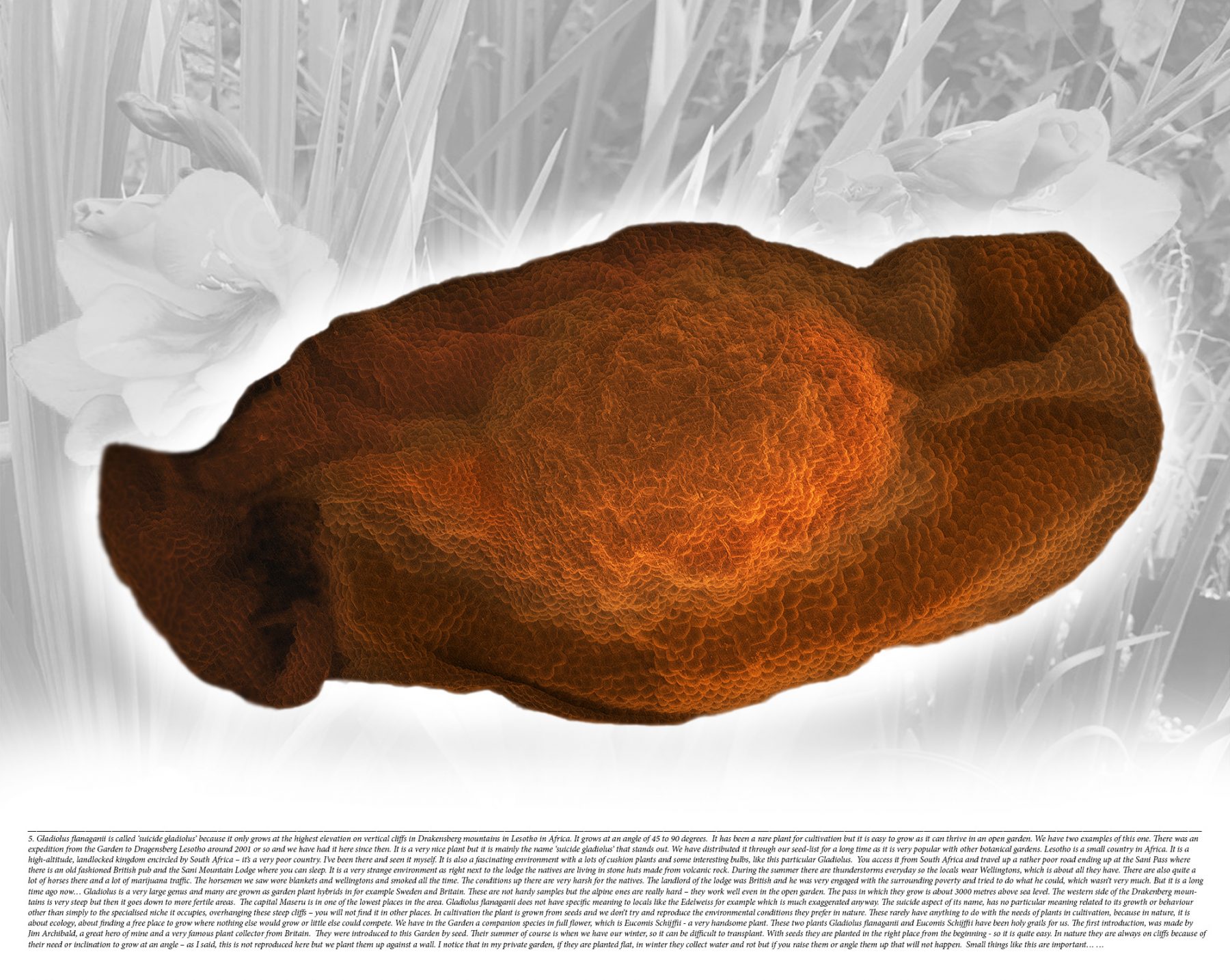
Gladioulus flanaganii
Beyond Plant Blindness Artworks: Seeds Flora Rilke Gallery , Searching for Stipa 1 Stolpboden and Searching for Stipa 2 Rain Shelter (Rock Garden)
Matrix
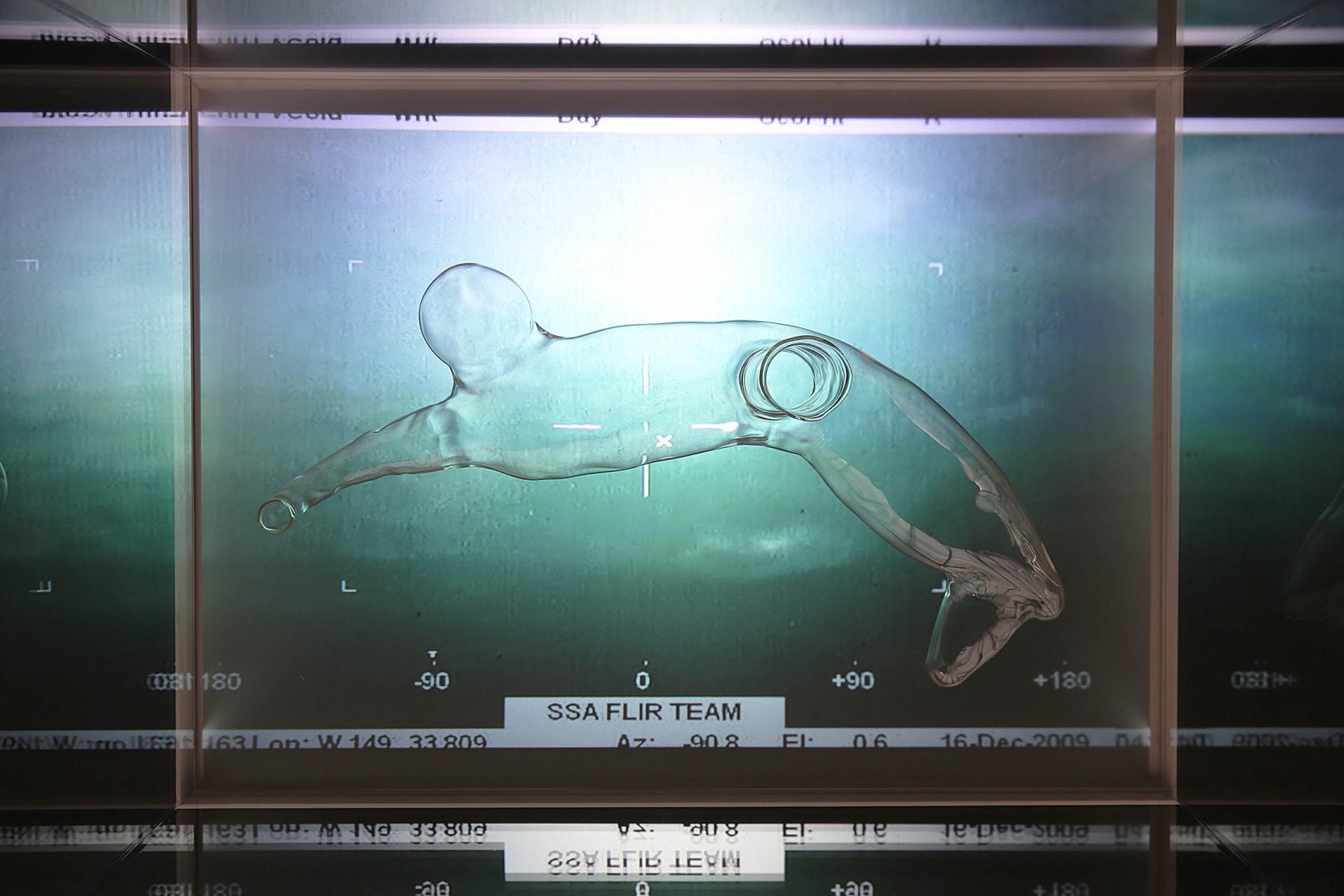
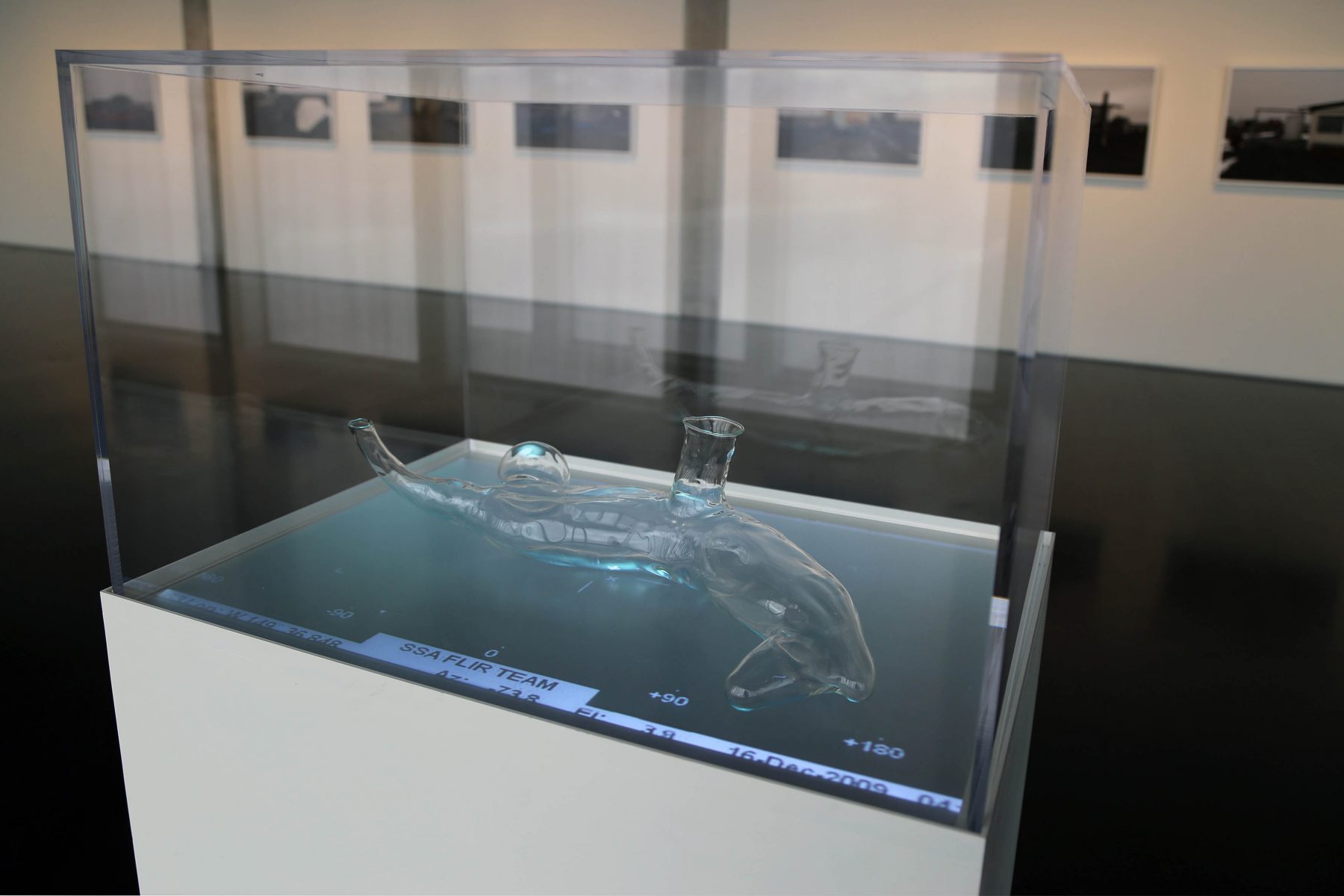
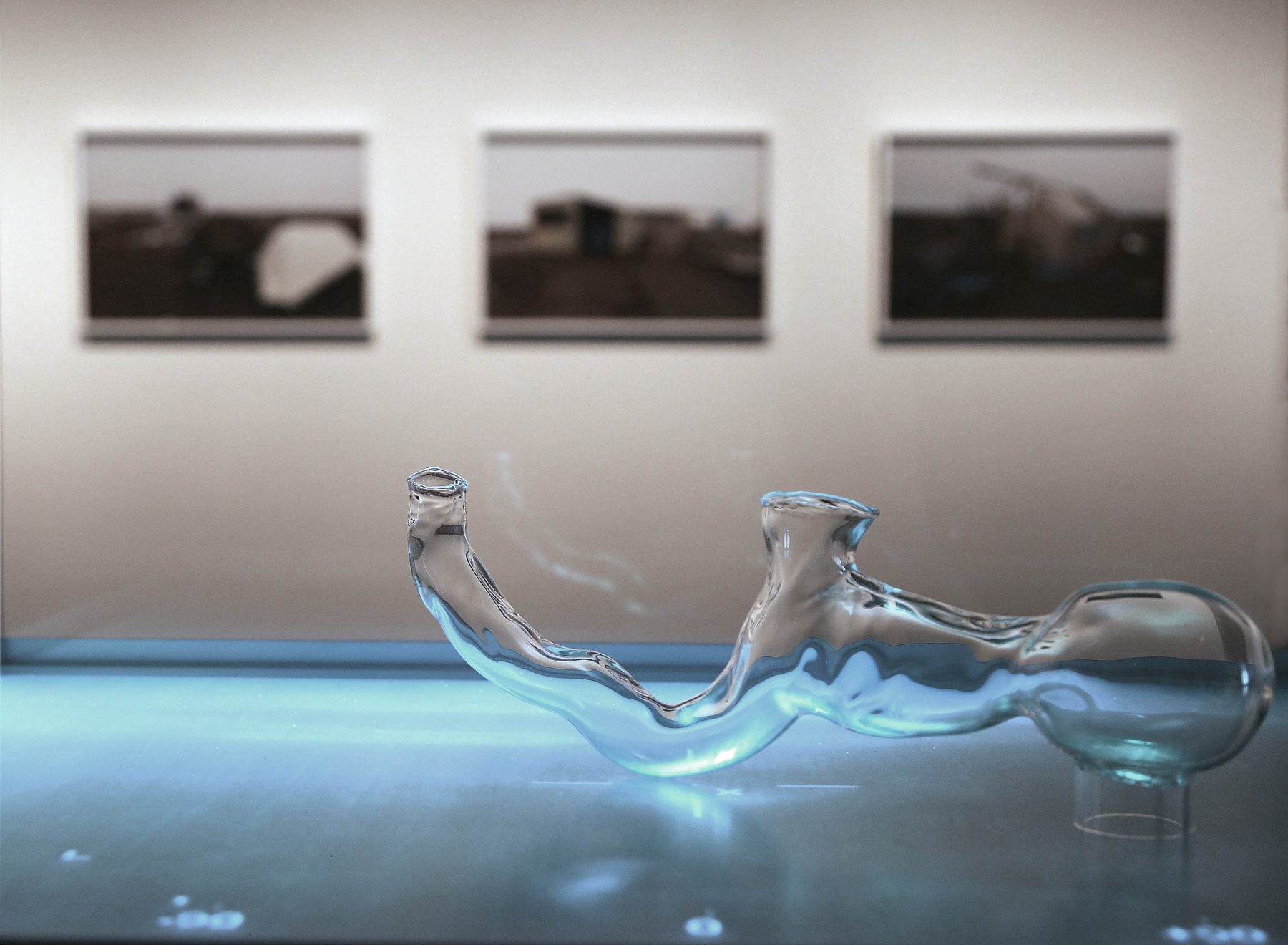 Matrix: Series # 1 (The View From Up Here, Anchorage Museum 2016
Matrix: Series # 1 (The View From Up Here, Anchorage Museum 2016
Snæbjörnsdóttir/Wilson
Barrow and the North Slope Borough is a place where human interests of many kinds intersect. With the National Petroleum Reserve Alaska to the West and the Arctic National Wildlife Refuge to the east, and Prudhoe Bay between them, without obvious correspondence, such interests coalesce with those of other species within a crucible of environmental contention.
For many years, as artists we have been fascinated by the individuality and ergonomics of polar bear maternity dens – their allure as places of beginning and of continuity and how, as such, they embody both a biological specificity of purpose and (to us) a cultural/environmental register of touching significance.
Having over the last six years, researched the unique iterations of denning, first in ‘wilderness’ areas in Svalbard and Greenland, far from human presence, we find that in the Alaskan arctic the National Geographic narrative of pristine isolation and environmental perfection is misleading… out there polar bears share the terrain with a complex human matrix comprising the Inupiaq people*, the oil industry, the tourist industry and a legion of environmental scientists. As a consequence bears will often den in close proximity to human sites.
Nevertheless, the oil industry is obliged to use its technology and resources including FLIR (Forward Looking Infra Red) thermal imaging in order to assist in locating the sites of denning bears during the preparation of ice roads each winter. The discovery of dens by these means can determine routes or prompt diversions.
Just south of Point Barrow within a mile of the most northerly place on US soil, there exists a last scattering of makeshift shelters and houses – seasonal human dwellings in various states of disrepair, to which townsfolk too migrate in the summer.
*Inupiaq people have an ancient relationship with the polar bear, its habits and behaviours and despite now sharing the location with incomers from over 30 nations, maintain hunting traditions, using the animal as a source of food and clothing.
the glass maquettes were made with the assistance of Max Robertson (University of Cumbria, 3D modelling) and Brian Jones (Wearside Glass, National Glass Centre, Sunderland UK – with financial assistance from the University of Sunderland)
 During the last decade the image of the polar bear has moved in the public imagination from being an icon of strength, independence and survival in one of the most climatically extreme of world environments, to that of fragility, vulnerability and more generally of a global environmental crisis.
During the last decade the image of the polar bear has moved in the public imagination from being an icon of strength, independence and survival in one of the most climatically extreme of world environments, to that of fragility, vulnerability and more generally of a global environmental crisis.
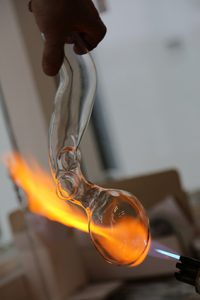
Matrix is an ambitious project, begun inthe Spring/Summer of 2010 with a residency in Longyearbyen, Svalbard where we focused on polar bear dens as the perfectly adapted model for habitat in the arctic environment.
The Polar Bear species is under threat from global warming, largely through the depletion of ice and shortened winters. Through discussion with experts in the field, empirical enquiry and ultimately, art-driven initiatives we looked for examples of adaptation to changing environmental circumstance as a basis for contemplation and the re-appraisal of accepted knowledge. We are particularly interested in the architecture of specific dens, and their functionality and capacity for modification during use, in response to changes in local weather and temperature.
On our recent visit to Alaska, we visited with biologists working with oil companies to minimise disturbance of denning sites on the North Slope.
Feral Attraction
- Museum of Ghost Ruminants
- Museum of Ghost Ruminants
- Tálkni
- shear/sheer
- Gun Bones
- Tálkni peninsula

A project exploring what happens when domestic animals transgress the invisible and unspoken boundaries that separate landscapes of domestication and wildness? In October 2009, a small flock of feral sheep that had persisted for some decades in an inaccessible part of the Westfjords of Iceland was rounded up by a team of men and dogs from the neighbouring communities. Some nineteen sheep were caught, but five more perished as they ran off steep cliffs attempting to evade their captors. Despite (or perhaps because) the incident had caused so much public interest, all those caught were sent to the abattoir the following day. Prior to the round-up, observations were reported suggesting that some physiological adaptations in the sheep were evident. The opportunity to investigate a supposed increase in leg length was lost with the summary disposal of the carcasses.
There is a tension between what we hold culturally as being right and proper and what we observe as a bid by another agent to disrupt that order. At the heart of this case is something that may be dismissed by many to be of no great consequence. For us, in ways resonant with ideas proposed by Jane Bennett (2010) in her seminal book Vibrant Matter, it serves as a vital pointer to expose how human systems suppress the inclinations and capabilities of ‘things’, acknowledging instead only those qualities and capacities we have assigned them.
Human will become blind to the wills of those outside human systems whose actions do not correspond with, or seem at odds with, their own – who are simply not compliant in the human enterprise at hand. When the animal agent is one with which we technically coexist, (a domestic animal) the oversight seems particularly acute. A lack of porosity is evident – a resistance to ideas or indicators of change – a reactionary dismissal of knowledge concerning environment and the adaptability of denizens – the shaping of existence by environment – the capacity of discrete environments to model not only new biological permutations but to spawn new behavioural possibilities as a consequence of introductions or migration – a failure on the part of humans, still to acknowledge that a condition of ‘becoming’ is actually the norm – in nature, stability and material independence are illusory.
Radio Animal
Radio Animal
lanercost
The Radio Animal mobile unit recently spent an evening parked up outside Lanercost Priory and fielded a number of anecdotes from a group of night owls. First up is an interview with Tom O’Sullivan…
tom describes how as a young teenager his parents’ garden was invaded by an enormous pig.
Snæbjörnsdóttir/Wilson: Radio Animal Unit
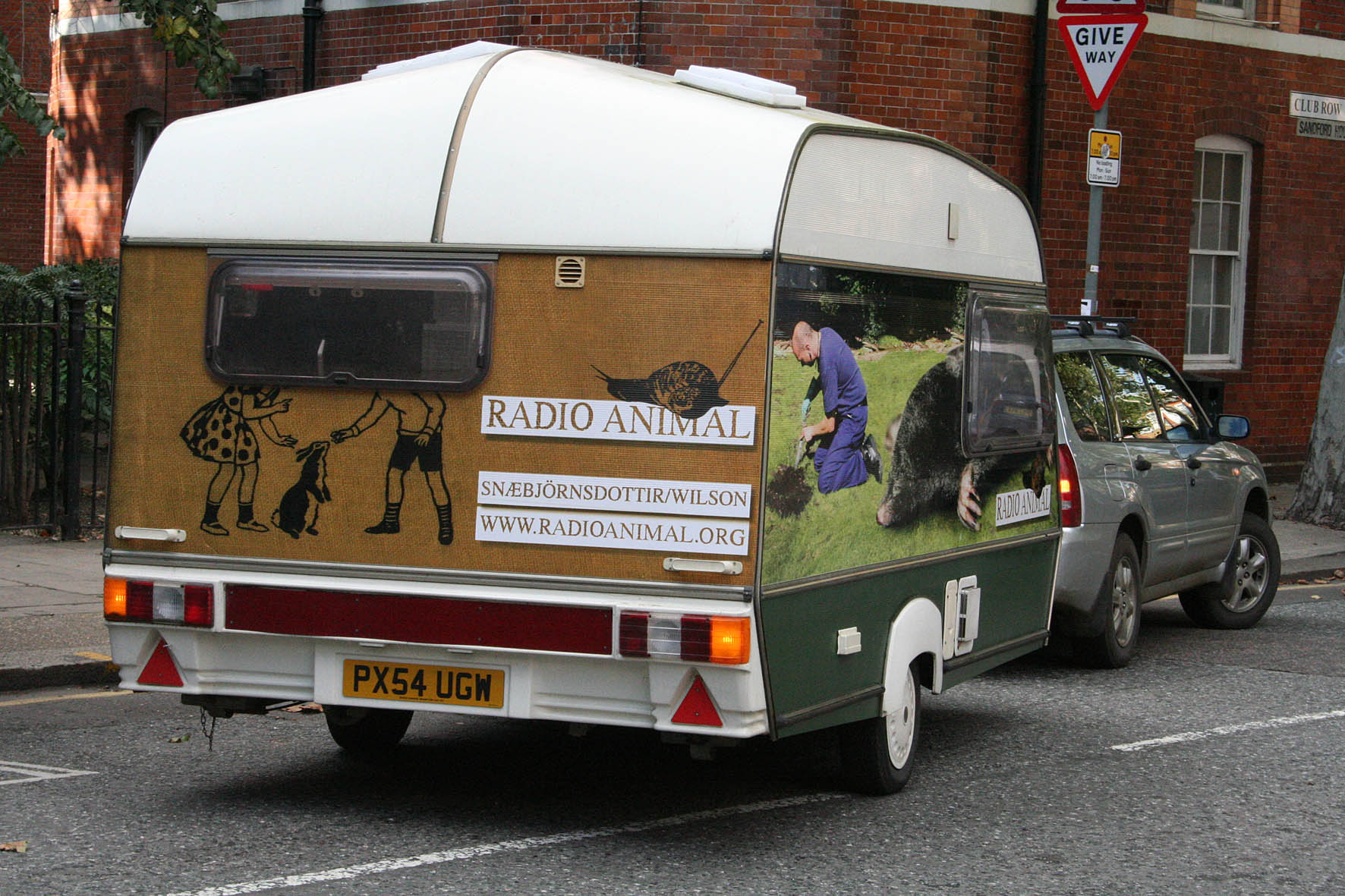 Radio Animal was a component of the project Uncertainty In The City – a speculative, artists’ exploration into the relationship between humans and the animals that nudge at and breach the borders of our homes.
Radio Animal was a component of the project Uncertainty In The City – a speculative, artists’ exploration into the relationship between humans and the animals that nudge at and breach the borders of our homes.
The content from Radio Animal was instrumental in feeding the Uncertainty… project as whole. During 2009 and 2010 took our modified webcasting van out to field events, and to individuals and communities in the Lancaster and Morecambe area to get the opinions of those with stories to tell regarding encounters between humans and other species
The project Uncertainty in the City concluded in November 2010 with the closing of the exhibition (opened September 18th) at the Storey Gallery in Lancaster, UK. The installation can still be viewed by going to the EXHIBITION page and clicking on the 360º radio animal link
for more on their projects see: https://www.snaebjornsdottirwilson.com
back to the garden: http://www.radioanimal.org
![]()

![]()
![]()
thanks to Daniel Matthews and Phil Maddock and Graham Barke from the House group and Max Robertson at UoC for website development.
Feral Attraction: Art, Becoming and Erasure
Foreword
In the summer of 1999 we (Bryndís Snæbjörnsdóttir and Mark Wilson) undertook a nine-day hike in Hornstrandir, an uninhabited and remote coastal area in the far north of Iceland. It was July and at that time of year, in that region there is 24-hour daylight. Remarkably however, for virtually the entire hike, we were submersed in a shroud of dense mist. Consequently, despite the general light, for over a week we were unable to see much beyond a few paces, either back from where we had walked, or ahead in the direction we were going. At the time, paradoxically, this had been a heady experience close to epiphanic in its effect. Where the physical activity of walking in ‘wild’ landscape for that length of time is normally associated with retinal reward, with ‘views’ to draw the eye into a distancing and objectifying relationship with the terrain and away from the immediacy of bodily locus, in this case, because of the mist, our attention was entirely held in an enforced myopia. Unable to draw upon the reassuring and conceptual certainties of a commanding view and so (dis)placed beyond the controlling apparatus of representation we were cast instead into the stumbling blindness of uncertainty, of indeterminacy, instinct, intuition, of saving our skin – in short, into the awkwardnesses of close terrain negotiation, survival and most significant of all – into the ontology of ‘the moment’.
Though revelatory, it was so in ways we could not easily express. We discussed it as a form of cerebral locking-in, where the deprivation of seeing either forward or back left us in a state of temporal suspension. The terrain remained to be negotiated, (we were driven with increasing anxiety by the imperative of an arranged rendezvous with a boat many miles south of our starting point) but this necessitated navigational means, which were suddenly and lastingly bereft of the faculty of vision. Like most people, we have experienced conditions of uncertainty and fear many times but this was altogether more all consuming and immersive. Simultaneously and crucially it must be said, it was also exhilarating.
The point of this is as a reference from which to suggest that there are other ways (involving the relinquishment of control) of experiencing and understanding the world beyond what is deliverable to us by means of language, semiotics and whatever means we customarily deploy in order to control. The story touches on ideas relating to the familiar and unfamiliar in the landscape. It turns the attention to methods we might use when confronted with the unknown, in order to soothe and calm anxiety and to populate our perceptual world instead with representations stripped of threat. It is no exaggeration to see the fear that prompts us to protect ourselves as being a key driver behind the acquisition of knowledge. The need to bring everything into the realm of what is understood and ‘known’, has led us to cut ourselves adrift from things which otherwise would tax us. But the reductionism implicit in this process has without doubt left us impoverished in other ways. Our insulation from environments beyond our urban or agrarian control has robbed us in turn of the know-how of how to be, not just ‘in’ the world, but ‘with’ the world. In the context of this chapter, what we propose is that the attraction of a feral condition lies in contradictory feelings provoked in us, in a disruption of order and an escape from what is known, named or contained. It turns things upside down and calls into question the otherwise indisputable. It speaks of the intentionality of ’things’ and like the arrival of sudden, heavy snow in the city, reminds us that things remain beyond human control. The condition that the feral state stirs in us, between uncertainty and exhilaration, or more practically between a sense of inconvenience or the opportunity to see things anew, is its compelling attraction.
Introduction
Feral Attraction explores the disconnection between empiricism and cultural determinacy and consider the effects of cultural blindfolding in a context of environmental fatalism. The project focuses on the site of the Vestfjords, a remote area in the North West of Iceland, which became the theatre for the enactment of urban/rural ideological tensions and ultimately, a frenetic and awkward resolution involving the herding and eventual eradication of a community of feral animals. The Vestfjords is an environment, which during the twentieth century has been increasingly host to controversy surrounding the inexorable population drain from a rural to urban way of life involving two gradual processes. One was the migration of people from farming regions into coastal towns (including Reykjavík) and the abandonment of farms in large parts of the Vestfjords. The second was the persistent out-migration from the region as a whole, including its coastal towns, both small and large. The herding narrative that follows in some way mirrors the management of remote farming families and small communities, the continuing presence of which came to be considered from an administrative perspective, to be an unsustainable drain on the wider National project. Our art research project focuses on the significance of imagery in the story and on the particular resonance of visual information in the accumulation and instrumentalisation of knowledge as the events unfolded.
Feral Attraction examines the particular incident in which, a flock of feral sheep, resident for several decades on the remote mountain peninsula of Tálkni in Iceland, was finally and with great difficulty rounded up in order to satisfy agricultural protocols and the legal subordination of farmed animals in Iceland. As recently as the 1920s, although not strictly considered good farming, it was not unusual in Iceland to keep sheep out and grazing through the winter months – a custom known in Icelandic as ‘útigangur’For a number of reasons including the increased capability for haymaking through mechanization and the need to address widespread land degradation and soil erosion, during the twentieth century the practice fell increasingly out of favour. Anyone now who allows the sheep to overwinter in the mountains not only transgresses what is thought of as good practice, but indeed is in breach of the law itself. What began as a way of exercising more control over stock eventually came to affect perceptions of the animal itself and its relationship to its environment of over a thousand years. This was signified by a reduced estimation of its capacity to survive in its adoptive land and a concomitant increase therefore in the assumed responsibilities of its keepers.
As artists, our enquiry engages with environmental and relational discourse and so a scrutiny of the representation of others and other species is central to our work. In an earlier art project, nanoq: flat out and bluesome (2001-6)[1], concerned with the killing and capture of polar bears by British expeditions over the last two hundred years, we mapped a transition in the culturing of a ‘wild’ phenomenon. In Feral Attraction we follow in reverse, the passage of the Tálkni sheep, from farmed to feral beings, acknowledging their independent survival in a wild landscape. In respect of both transitions (polar bear or sheep) the association with man anticipates a fatality, veiled in a representational transformation. Amongst other intentions, our work critiques the still prevalent primacy of human interests and environmental exceptionalism together with the apparent impossibility of humankind to divorce itself from its solipsistic regard to self-survival, both practically and theoretically. Instead we lean towards a relational and ecological paradigm in which the species Homo sapiens is accepted as merely a player amongst a multitude of players.
Through Icelandic history the polar bear has been an occasional visitor to the island shores; folklore has generally recorded horrific accounts from these meetings[2]. Far from seeking to underestimate the danger of polar bears under these circumstances, we want to take a step back to reflect and consider alternative and what we consider more measured and inquisitive approaches and behaviour towards the ‘aberration’ of unexpected arrivals and migrations in the landscape. In Svalbard, a territory in which the encounters between polar bear and man are frequent, legal constraints are in place, to avoid polar bear deaths whenever possible. The right of the indigenous animal to this landscape, which the Spitzbergen human community has come also partly to occupy, is paramount, instilling and reflecting a different sense of respect and environmental order. Whilst on an artists’ residency in Longyearbyen, Svalbard in 2010, the local radio reported a group of tourists in crisis; a polar bear had shown up around their camp and was not responding to air rifles, flares and other customary measures used to scare bears away. But instead of tranquilizing the animal and airlifting it to a new location, as might normally be the case, the ombudsman/sysselman ordered that the tourists instead be relocated by helicopter.
In respect of these examples on Svalbard and Tálkni, the potency of the encounter between ‘man’ and ‘animal’ signals complexity in the perceived constitution of environmental order and protocols. Australian ecofeminist Val Plumwood (2000), in her reflections on her experience of being attacked and nearly killed by a crocodile in the East Alligator Lagoon in Kakadu, northern Australia, highlighted a significant ethical perspective by recording her determination that contrary to the normal response following such attacks, the animal in question should not be hunted down and killed, believing herself to be an intruder into its territory.
In taxonomic and other human systems designed to underpin the human position in relation to other beings, the differences between a crocodile, a polar bear and a sheep are clear. But what can be compared usefully is our approach and attitude here to any species testing the margins of what we consider to be ‘our’ territory. In our inability to adjust to the signals of environmental threat (a condition sustained by such anthropocentrism), it is and will remain impossible to distinguish or redraw our taxonomic biases of significance. Dust, plants, animals, minerals, biomass, particles, waves, oxygen, cold, densities are oceanic in their combined effects and mutuality. In this light, importance may not be measured in their apparent individuality, nor indeed in their ‘human significance’, but in their infinitely complex behavioural associations and interactions.
Historical context
There is a history to ‘feral’ sheep being on Tálkni. The flock initially came from a farm called Lambeyri, whose owner, due to personal circumstances, is thought not to have been managing his sheep strictly in accordance with the law. In the early 1970s he stopped farming, leaving the farm to his family. They chose to keep the house and the land, but did not wish to keep farm animals. It is understood that by that time, the remaining sheep at the farm had already taken to the mountain. In accordance with Icelandic law, landowners of registered farmland have a duty to contribute to herding sheep generally in their district. In the Vestfjords this involves negotiating the many steep mountains characterizing this landscape. It is a dangerous job, requiring detailed knowledge of the area as well as substantial agility and fitness.
The first officially recorded and acknowledged existence of the sheep in Tálkni was in 1984, when there was an outbreak in Iceland of the neurodegenerative disease scrapie (‘riða’ in Icelandic). At the time it was thought that between forty and sixty sheep were on the mountain. An argument concerning the presence, or otherwise, of the disease ensued between local farmers and the Chief Veterinary Officer. The farmers wanted proof that the disease was in their area before agreeing to cull their sheep. The veterinary officer was unable to provide such evidence, but pointed to the unregulated sheep on Tálkni as being amongst those that might have crossed the district borders in question and so were possible carriers of the disease. In the end, the Chief Veterinary Officer ordered these sheep to be culled. To fulfill the task, he called on a special division of the Icelandic Coastal Guard known as the ‘Viking Squad’ to shoot the sheep on the mountain from a helicopter. This was something at which this special squad was not expert. To make matters worse, the expedition hit bad weather, resulting in it having to be aborted, leaving some sheep dead but many more badly wounded. A few days later, when the weather had calmed down, the local rescue team then went over to the mountain and found, as reported by Lilja Magnúsdóttir when we interviewed her in Reykjavík on 25th of June 2010 “thirty sheep either dead or dying”. In respect of these animals, the team had no choice but to finish what had been started. They also took photographs at the scene, which locals would reference in support of their opposition to further remote directives of the Chief Veterinary Officer back in Reykjavik. This visual evidence prompted two consequences; it helped constitute an identity for the remaining flock of sheep as ‘Tálknafé’ (Tálkni–sheep) and it galvanized the identity of the local farmers, affirming the division between themselves and the authorities based in the Capital.
Twenty-five years later, in October 2009, news came that the flock of feral sheep on Tálkni had once more been targeted, but on this occasion they had been herded from the mountain and slaughtered. As the story of their capture unfolded through the media, it revealed a fascinating tale of human dominion. A group of the best herders (‘smalar’) of the area, together with their sheepdogs, had risked their lives in climbing the mountain to retrieve the sheep. The adventure was undertaken by order from the chief legislative officer in the area. The consequence was that from a flock of twenty-five, fourteen sheep were captured alive, five perished as they fell from the cliffs in their attempts to avoid capture and six managed to escape. The fourteen captive sheep were loaded on board a boat that had brought the herders to the mountain and taken to the nearbytown ofPatreksfjord where they were immediately slaughtered. In addition to the ewes there were four rams and retrieved from the other side of the mountain, three yearling rams. The six remaining sheep, two rams, three ewes and one ewe lamb were retrieved a few months later in January 2010, thus ending for the time being at least, the existence of sheep onTálkni.
Art and Relationality
The story caused considerable controversy in Iceland at the time, and for some, provided a new focus for environmental concerns. In order to find out more, we visited the Tálkni area in the summer of 2010, together with Dr. Karl Benediktsson, Professor of Human Geography at the University of Iceland and Unndór Jónsson, an independent artist and researcher and recorded a series of interviews with people who’d been connected to the events. We gathered images, documentation and other material along the way. On location we interviewed; Ásgeir Jónsson, Ásgeir Sveinsson, Þröstur Reynisson, Sveinn Eyjólfur Tryggvason and Ragnar Jörundsson and on our return to Reykjavík, we interviewed Lilja Magnúsdóttir another local inhabitant temporarily residing in Reykjavík as well as previous Chief Veterinary Officer Dr. Sigurður Sigurðarson, and Dr. Ólafur Dýrmundsson, whose specialism is the Icelandic sheep, and who works for the Icelandic Farmers’ Association.
Ásgeir Jónsson is a member of the local council, who had also for some years been responsible for organising the autumn roundups of sheep. His role was important, but complicated, in that for many years he had turned a blind eye to the sheep being on the mountain. Due to his official capacity, when the court order came, he was forced to take part in the clearance. He also had valuable information for this project in that due to a recent minor accident he was stationed back in the boat to receive the animals during the herding, which meant that he had physical contact with each sheep captured.
Ásgeir Sveinsson, a sheep farmer, who lives and farms with his brother and elderly father. At the time of interview he had a flock of 800 sheep. He has a reputation as an excellent ‘fjármaður’ (shepherd) and is the owner of exceptionally well-trained sheepdogs. Ásgeir’s interview provided a detailed description of the sheep’s unique behaviour and their unusual reaction to humans and dogs. He is very knowledgeable about sheep breeding and is the proud keeper of the only remaining known descendant of the sheep from Tálkni. This ewe was the progeny of a sheep that had escaped to Tálkni but which he had managed to herd back from the flock. His description of the characteristics of this animal was of further interest. He told us that in spring, when released, she heads to the top of the nearest local mountain and spends the summer there, apparently alone.
Þröstur Reynisson took part in the herding as an employee of the town council and the owner of a good dog, prepared to stand its ground. His role was to be at the foot of the mountain with his dog to stop the sheep escaping along the beach. He talked about the wariness of the flock, reasoning that from time to time the sheep had been shot at by locals, some for target practice and by others for meat.
Sveinn Eyjólfur Tryggvason was recruited by the governor of the local council and had been put in charge of the herding operation. He selected the men who went on this trip. In the interview he discussed the different characteristics of this flock and why the dogs did not work as they might in other sheep herding exercises. He did not consider it unusual that some sheep fell from the cliffs, as it is behaviourally characteristic of sheep when cornered on a mountain. He talked from the perspective of animal welfare and observed that the flock would have been much larger had it been kept in the right conditions. He mentioned that only one sheep of the nineteen caught, had been earmarked, as all farmed sheep are. This animal had been onTálkni for four years, indicating that it had chosen to join the feral flock.
In our interview with Ragnar Jörundsson, the governor of the municipality of Vesturbyggð, to which the village of Patreksfjörður (Patreksfjord) belongs, he talked about the police involvement and how the local council established jurisdiction to clear the area of sheep. He discussed the division between the local people and city dwellers “who don’t know anything about sheep”. He also accused the media of reporting the incidents in a particularly frenzied way in order to stir up opposition, deeming their reportage to be misinformed. He talked about the responsibilities of the district council towards sheep that are unclaimed and therefore ‘in need’. These sheep by default belong to the council. He said the council takes advice from the Chief Veterinary Office and the Farmers Union and that both thought it best to clear the sheep of the area.
Lilja Magnúsdóttir was born and raised at the farm opposite Tálkni. She was part of the first serious attempt of gathering the Tálkni sheep, which took place in 1992. She is interested in the breeding of Icelandic sheep and described the physical appearance of the sheep both as livestock and as meat during and after the 1992 gathering. In our interview her description concerned the particular shape of the feet, observing them to have been higher and thicker than in normal sheep. She also described their body as being longer and more slender. As produce she described the location of fat as being in the muscles themselves and under the skin, whereas in the farmed Icelandic sheep the fat is around the abdomen. She proposed that such sheep would not have survived, as they would too easily have been caught up with and trapped in the heavy snow. Her theory concerns ‘natural selection’ as she calls it – saying that the sheep originating from the Lambeyri stock – the ones that were ‘abandoned’ as it were when the farm closed – were more suited to the landscape and the weather and that this was the reason the majority of the flock looked as it did, despite newer additions.
Ólafur Dýrmundsson’s comments were from what he considers the perspective of animal welfare. He put forward various reasons why sheep are not able to take care of themselves. He pointed out that one out of every four sheep taken in 2009-10 were from other farms around the area. Despite that, he acknowledged that the majority was of a colour no longer prominent in Icelandic sheep. He says that this had caused difficulties for the coast guard elite squad when attempting to shoot them from the helicopter, because the colour blends with the landscape – making the animals difficult to see. He went on to say that this colour is the dominant outcome when mixing with white and that the presence of a flock of sheep in Tálkni would always encourage other sheep to join the group, it being such a difficult area to herd. In this respect he was sympathetic with farmers at not being able to go after them. While, he denied there being any such thing as ‘feral sheep’, he estimated that of 470,000 sheep in Iceland, approximately 500 are not accounted for.
Jón Þórðarson was one of the owners of the surrounding land closest to Tálkni. He was against the herding of the sheep, wanting instead to keep them on the mountain. At the time of our visit he was living in the nearby town of Bíldudalur and from there he runs a tourist and fishing business together with guesthouse and art gallery/residency. His idea was that they could have become a tourist attraction. He tried to stop the sheep being herded by declaring them to be on his land; however by law, in order for this to be acknowledged, he would have had to build shelters for them on the site and so his claim was dismissed.
From the beginning of our research in Iceland, the role of the image was of great importance. Images were crucial in cementing the identity of the sheep as a ‘special flock’ by their unique appearance on the one hand and on the other, by means of the television footage documenting their attempts to escape capture on this inhospitable mountain. This footage, stood in contrast and conflicted with an image of domesticated, living produce destined for the slaughter and consumption normally associated with ‘réttir’, the autumnal roundup. In the imaginations of many who protested from near and far, these sheep instead were independent beings of note, deserving of their right to live out their lives. The imaged embodiment of the animal in an effectively non-human landscape seems to challenge the scope of human representation by means of a paradigm shift. In its apparent self-determination, the animal in question can be seen to have grown into ‘its larger self’ through its adoption of this landscape as a permanent home beyond human accessibility and control. The (albeit perhaps reluctant) acceptance of this by locals in the surrounding area for so long, eventually in itself became a bone of contention prompting the central government office to make demands for the flock to be recovered.
In further comparison between the polar bear and the Tálkni sheep in the context of the Icelandic landscape, it has always been deemed necessary to kill the polar bears arriving in the country, because the Icelandic wilderness is considered not to be their natural environment. As a non-native species and a carnivore, the polar bear is considered a danger to other Icelandic beings and impossible to contain humanely and securely. The Tálkni sheep on the other hand did not threaten anyone or anything. The land they occupied was not managed, occupied or indeed coveted by anyone else. In fact, the family who owned Tálkni was quite comfortable with the flock of sheep remaining there. This however raised the legal necessity to erect houses for their shelter and upkeep – itself, an impossible task, considering the nature of the land and its limited accessibility. Paradoxically, this would in turn have undermined the independence of the flock and therefore defeated the purpose of any armistice.
There are different ways of interpreting what happened on the mountain the day the flock was herded, leaving five sheep dead and six still at liberty. There are many questions to be asked regarding animal consciousness – whether for instance that in the context of new circumstances, jumping from a cliff is indicative of the exercising of choice. There are the complicated distinctions to be made between what is seen as a ‘noble’ and an ‘ignoble’ killing – the affront to the many Icelanders who protested was triggered by what was seen to be a bungled and, as a consequence, inhumane, exercise of shepherding. Was this perhaps an unconscious conflation of the idealized concepts of tidiness and seamless erasure? When humans slaughter animals, their imposed departure is one of transformation, not normally regarded as one of eradication. In order to preserve a sense of vital continuity, within Western culture, particularly Anglo-American, it has been a characteristic that insofar as we are eaters of animal flesh we focus on meat as opposed to the extinguishing of life that such consumption necessitates. This death is a byproduct of our desire to eat, but its visibility has been discreetly minimized in deference to this more culturally palatable focus of attention. Everywhere in the story, and not least in our interviews, there are contradictory perspectives and conflicting ideals. There is the unquestioning belief by some in the need for adherence to existing legislation. There are environmental perspectives; those based on animal rights; and there are matters of professional and moral pride and the desire of farmers, to be seen to be ‘taking care’ of the animals in their charge.
Exposition and process
From an early stage in the examination of this story and in the research material we accumulated, we stumbled again and again on the claim that something odd had happened to the sheep during their time on Tálkni. In the media, in popular accounts, and in the interviews we conducted with those on the ground, there is repeated mention of an adaptation in the sheep’s physiology. A natural, adaptive, even evolutionary process had occurred, due apparently to their constant negotiation of this demanding mountainous terrain. This adaptive response to the topographic constitution of the landscape that ensured their relative isolation and insulation from humans for so long, seems to have been most conspicuous in a lengthening of their legs. But in the absence of concrete evidence, how is this ever to be tested?
In art, there is often more significance in one identifiable and well-articulated detail than can be relayed in a wealth of information, particularly where such a detail exposes a flaw, a fluctuation, or break in the rhythm of cultural (and human-specific) affairs.Relationality is key to our artworks and projects. It is reflected in the research process by which we seek to gather information and evidence through contact with individuals and organisations concerned. These meetings are often recorded or documented through photography, video or audio and are often pivotal in influencing the structure and the development of an artwork. The biggest significance of this story is in the exposure of the insecurities of ‘expert’ culture. Those who felt they should have power felt their power usurped. In managing the evidence (the disposal of the flock and subsequently of the carcasses and bones), the community of experts involved, reduced the physical signs by which the history of this event (this nomadic becoming) could be remembered or told. In the absence of relics and data, all fact and fiction is conflated, all borders between them are blurred and therefore subject, potentially, to wholesale dismissal as myth. But by ascribing greater significance to materiality and ensuring its strategic absence, the perpetrators of this act perhaps underestimated the ripple effect of that removal – into every void, the imagination will pour its will or its questions. Without the hard evidence to provide a satisfactory backstop to such suspicion, the impertinence of the questions is always likely to exceed what facts alone might have tempered or quelled.
In this work, the value of the leg and its transformation pertains to its role in the extruded and extruding process of liberation – the sheep remained out and over time became better capable of being so by a process of adaptive response to the environment.The symbolic driver – in representational terms is in a retrieved relic – even (by necessity) a faked relic, designed and made in order to give value to something observed but allowed neither to survive nor be measured and corroborated by instruments of science. For this artwork, the bone is extended in correspondence with the lengthening of the legs as was reported by some observers of the sheep. The gap of significance, is bridged by a hoop of silver, a material we accept culturally as being ‘of value’. The human representation and symbolic conferral of importance may even be seen as a compromise here, in deference to the semiotics of a culture that often fails to recognize intrinsic value. Here, silver gives presence to the missing, valuable, phenomenological and symbolic apparent ‘effect’. It signifies the change that is intrinsic to a) a period of time, b) a specific location c) the transitional condition of ‘becoming’ and in addition, both d) a theft and e) a possible conspiracy where all evidence of the flock and its bodily remains was eradicated deliberately, before biologists (for example) had the chance to examine them. Broadly it is the embodiment of difference – in opinions and of the contested claim that the sheep adapted as a consequence of having become feral. As there was no opportunity for scientific study to be conducted on the flock before or after slaughter, we mark a space in which this extension hovers between being a memorial and a relational corollary of being feral in a mountainous landscape. With this intervention, we keep alive the story of a community of domestic animals, which despite climatic inclemency and the seeming impenetrability of this landscape, survived without human care for three decades and indeed showed every sign that they might have continued to live there in perpetuity.
After-lives
The flawed nature of this enterprise, that is the inefficient and messy nature of the herding of the Tálkni sheep, had a retrospective after-effect, calling into question the validity of the enterprise itself. The very representational tropes which ennoble human agrarian enterprise, for example the promotion of efficiency in the management of land and animals of the kind implicit in historical paintings, (Thomas Gainsborough’s Mr & Mrs Andrews, Paul Potter’s Bull, and innumerable 17th Century livestock paintings), throw the dubious nature of the reclamation of the herd into sharp relief. Whilst involving a starkly different kind of relationship to our ‘landscape others’ there are parallels also to be drawn (and they have been described above in this text) between the controversy and contradictions embodied in this episode and those prompted by what has become an intermittent but recurrent phenomenon in northern Iceland – the arrival of ‘stray’ polar bears. Tidiness and order is threatened by the presence of the feral animal on the one hand and the appearance of the exhausted and dangerous alien wild animal on the other. Rather than engaging with complexity and being open to the opportunities it may offer, the default position of local and national governmental authorities seems to be to excise the agent that would test its borders, thereby allowing the maintenance of the status quo. The resultant human fault-line seems to run between two ideologies – a national, establishment view on one hand, in which the integrity of Icelandic farming (and perhaps culture) is an imperative. On the other, there is a growing lobby of those whose interests can perhaps be said to be less locally rooted and who are able at this point to exercise little direct power, but whose collective voice increasingly coheres around environmental ideas extending far beyond nationhood.
In another art project from 2010 entitled, Uncertainty in the City, we explored the idea of contested ‘human’ environments with specific relation to the presence of other species. The project hinged on an (albeit unwritten) assumption of neutral interspecific claim to territory and we conducted interviews with hundreds of participants in relation to their encounters with animals within and around the margins of their home. Along with an invitation to retell their stories we invited them to consider ideas of ownership, colonization and encroachment in this context. Given the space to objectify the experiences there was surprising openness towards questioning the rationality of their responses and to confront the emotional inconsistencies within such experience. The garden – a piece of land we suggested was a surrogate, albeit altered tract of ‘nature’ – is a kind of cultural epidermis by which tolerances and affections for others moving through, were tested and analyzed. In this project and more widely we use aberrant exemplars to challenge accepted behavioural and cultural tropes. In the Uncertainty project, non-human encroachment on human systems was often, although not always, viewed as a negative occurrence. Typical cases were the presence of ants for instance around the door to a house – the margins of tolerance were drawn in relation to the proximity to threshold or perceived infringement either towards or across that line. Urban foxes and seagulls are amongst the most consistently contested species and their presence is alternately construed as pleasant, desirable or offensive, according to the experience and/or conditioning of the humans concerned. In the case of the Tálkni sheep, however, the migration away from the human, in giving further dimensionality to the phenomenon of human/nonhuman entanglements, reminds us that our presence is neither necessarily crucial nor desirable for most species, even ones we’ve domesticated and trained to be reliant upon us.
The feral flock was a thorn in the side of the agricultural community – not necessarily those in the local area in question, but more starkly and tellingly, from a remote, central-administrative perspective. But in the resistance of something, particularly an entity that is normally attributed with little self-determination, as artists we see something much more interesting, in that it breaks the mould of our expectations – it draws our attention. The expression and enactment of capabilities beyond what we are given to believe is expected, forces us to re-examine our perception of that thing, and our initial reasoning for arriving at such a perspective. Did we believe we had modified the behaviour and capacities of the domestic sheep to the extent that it had indeed become an unreconstructed model of our projected will upon it? Just as we might enjoy the frisson of being lost when we believe that it is a temporary condition, so too do we find fascinating the idea that our constructed world-view is in some way destabilized by the will of another. In the same way therefore, when such aberrant behaviour is suppressed, there is a sense that an injustice is done. Something, which appeared to us to offer a new perspective – rather than being acknowledged and valued, preserved and observed – is eliminated purely in order that the status quo is restored and the behaviour-model is reaffirmed. Such action is based on an anthro-utilitarian approach that sees adaption or evolution within systems we have engineered around other adopted organisms as running counter to our interests and therefore undesirable. Simultaneously of course the phenomenon exposes the mythic projections we deploy in order to uphold our utilitarian requirements: if an organism is useful for this and that, then anything – any capacity, behaviour or inclination that does not support that function-set – may, if noticed, be deemed undesirable and may be subject to extirpation. This thinking is the basis of intensive breeding programmes and the kind of genetic modification that gives us for instance, hairless cats and seedless grapes. It is this single-mindedness that in modernity has caused us increasingly to consider things, places and beings in isolation. This has been to the detriment of possible developments towards a more coherent and complex world-view, which might privilege, instead, an understanding and appreciation of ecologies and the acknowledgement of material interconnectivity.
There is a tension between what we hold culturally as being right and proper and what we observe as a bid by another agent to disrupt that order. At the heart of this case is something that may be dismissed by many to be trivial and inconsequential; for us, in ways resonant with those ideas proposed by Jane Bennett (2010) in her book Vibrant Matter, it serves as a vital pointer to expose how human systems suppress the inclinations and capabilities of ‘things’, seeing instead only what we have designated for them. We have a tendency to blind ourselves to the wills of those outside our systems whose actions do not correspond with, or seem at odds with, our own – who are simply not compliant in the human enterprise at hand. When the animal agent is one with which we technically coexist, (a domestic animal) the oversight seems particularly acute. A lack of porosity is evident – a resistance to ideas or indicators of change – a reactionary dismissal of knowledge concerning environment and the adaptability of denizens – the shaping of existence by environment – the capacity of discrete environments to model not only new biological permutations but to spawn new behavioural possibilities as a consequence of introductions or migration – a failure on our part still to acknowledge that a condition of ‘becoming’ is actually the norm – in nature, stability and material independence are illusionary.
Bryndís Snæbjörnsdóttir and Mark Wilson
May 2013
Acknowledgements:
Professor Karl Benediktson for his assistance and support of this research. Unndór Jónsson for transcription of interviews and research assistance.
References
Bennett, J. (2010) Vibrant Matter: A Political Ecology Of Things. Durham, Duke University Press.
Plumwood, V. (2000) Being Prey in J. O’Reilly, S. O’Reilly, and R. Sterling (eds), The Ultimate Journey, Berkeley, CA
Magnúsdóttir, L. Interviewed by: Snæbjörnsdóttir/Wilson. Reykjavík, 25th June 2010
Snæbjörnsdóttir/Wilson. (2006) nanoq: flat out and bluesome, London, Black Dog Publishing
Snæbjörnsdóttir/Wilson. (2010) Uncertainty in the City. Berlin, The Green Box
[1] nanoq: flat out and bluesome traced stuffed polar bear specimens in Great Britain from their current locations in museums and private collections, back in time to their Arctic encounter with man. [2] In 2009 the authors were present at Skagafjörður in northern Iceland to witness a failed attempt to capture and relocate a polar bear discovered in the area. Despite a national will to manage the situation more adeptly than had been done in the past and Governmental involvement towards that end, the incident once more ended in the death of the polar bear.
